













Excellent transportation infrastructure: 400 series highways, rail, and air.
Proximity to education. Six universities and four colleges within 100 km.
Strategic access to major markets & border crossings.
Affordable land prices and prepared-to-dobusiness approach.
Middlesex County presents an appealing proposition for manufacturers seeking a conducive environment for growth, with its combination of site advantages, well-planned infrastructure, skilled workforce, and quality of life amenities. Visit investinmiddlesex.ca for more information.

4
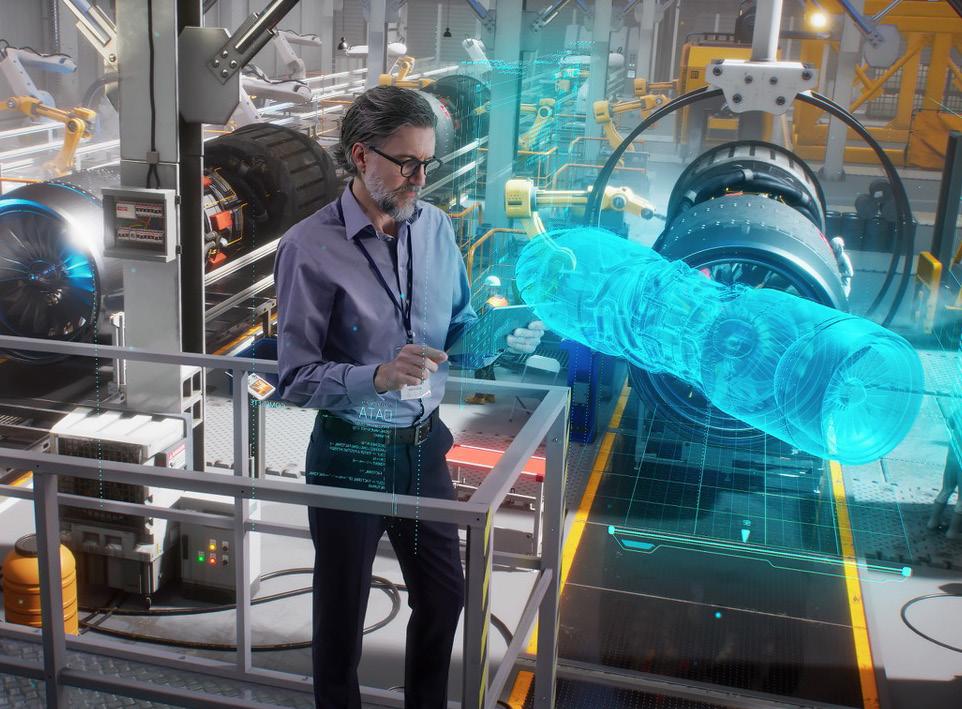

14

MICHIGAN:
$87.5 Million in Grants Strengthen and Accelerate Site Readiness Efforts
INDIANA: For The Bold
INDUSTRY OUTLOOK: Manufacturing Game-Changers
Better ways of accelerating production and creating process efficiencies are becoming embedded in today’s advanced manufacturing operations
By David HodesINNOVATION AND STRATEGIES: Money Flowing Into Energy’s Broadening Transformation
Sustainable energy rules. Now more viable options being discovered and utilized for clean energy optimization, all with plenty of financial backing
By David HodesINDUSTRY INSIGHT: Charting the Bioscience Prosperity Push Top average wages, big growth in dozens of states, and a faster pace of lab discoveries combine to generate an economic boom time for all bioscience subsectors
By David HodesASSOCIATE PUBLISHER
Alan Reyes-Guerra areyes@bxjmag.com
205-862-5175
EDITORIAL CONTRIBUTORS
David Hodes
CREATIVE DIRECTOR
Clint Cabiness
clint@dialedinmediagroup.com
205-613-5910
EDITORIAL OFFICE
King Publishing, Inc. 1000 Stafford Court Birmingham, Alabama 35242
Tel: 205-862-5175
ONLINE MEDIA ASSISTANT
Nick Boliek
nick@dialedinmediagroup.com
SUBSCRIPTION CHANGES & REQUESTS
205-862-5175 or www.bxjmag.com
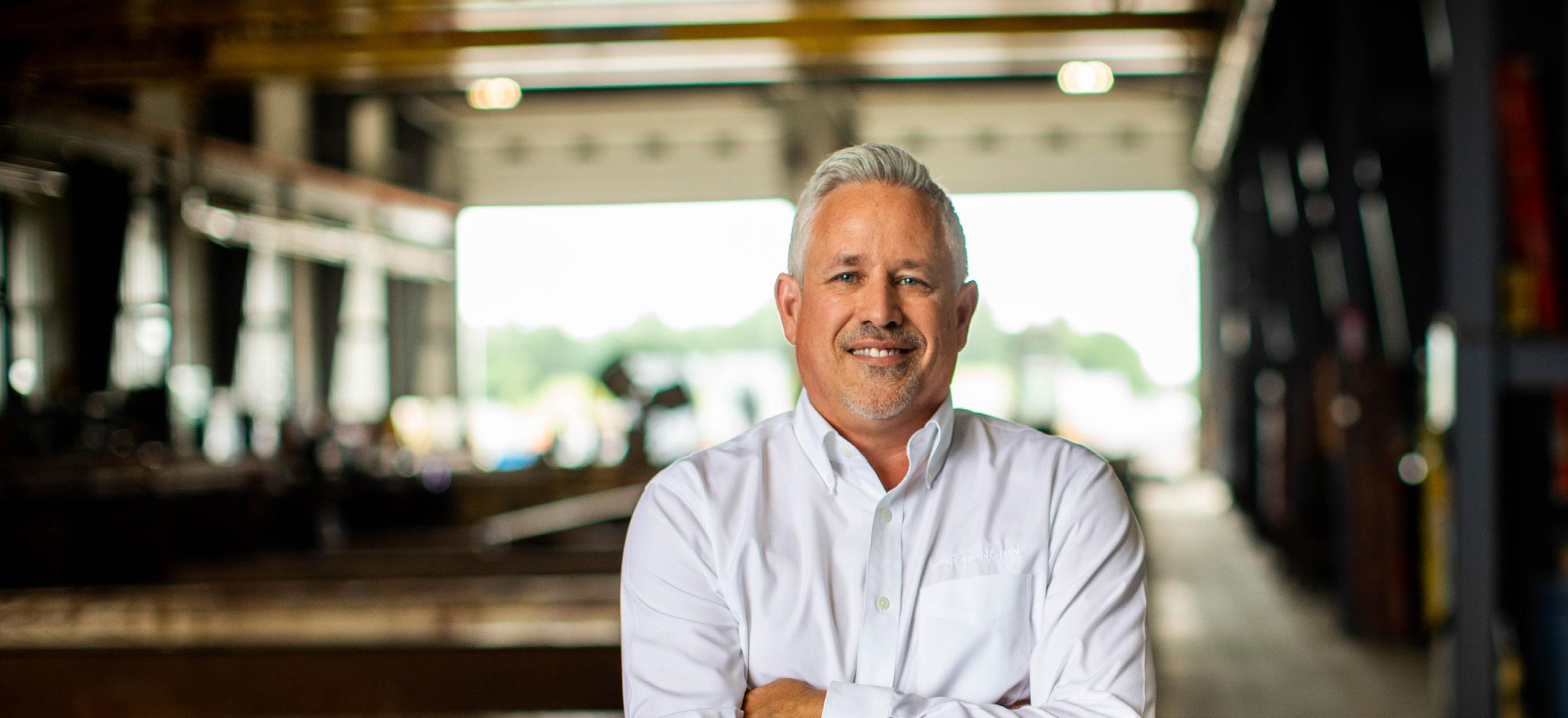
NORTH CAROLINA: A Pro-Business Environment
ALBERTA, CANADA: Where Venture Capital Meets Innovation
King Publishing, Inc., 1000 Stafford Court, Birmingham, AL 35242; www.bxjmag.com. Advertising rates are furnished upon request. Subscriptions are free to those who qualify. Non-qualified subscriptions are $69 in the U.S.; $89 in Canada and Mexico; elsewhere outside the U.S. is $99 for 10 issues. Back issue rate is $6 when available. Payment must accompany order. The views expressed in all articles and advertisements appearing in the Business Xpansion Journal magazine are solely those of the author and advertiser, respectively.
© Copyright 2024, King Publishing, Inc. All rights reserved. No partof this publication may be reproduced without written permission from the publisher.
POSTMASTER: Send change of address notification to Business Xpansion Journal, 1000 Stafford Court, Birmingham, AL 35242. Subscribers can make address changes by calling 205-862-5175 or by e-mail at www.bxjmag.com.

1000 Stafford Court, BIRMINGHAM, AL 35242
TEL: 205-862-5175
Printed in

Middlesex County, situated in the heart of southern Ontario, is sparking interest for manufacturers seeking expansion or upgrading facilities. Boasting a blend of rural and urban features, the county offers several advantages for both multinational corporations and local businesses:






Prime Location: Middlesex County enjoys a strategic location in southern Ontario, providing easy access to major markets and transportation routes.
Affordable Land Prices and Government Support: Businesses can benefit from competitive land prices in the county and support at various levels of government. Middlesex County’s proactive approach to business, including upfront work on property information and assessments, reduces risk and accelerates construction timelines for companies.
Educated Workforce: With access to educational institutions like Western University and Fanshawe College, Middlesex County boasts an educated workforce, suitable for various industries.
Desirable Quality-of-Life: Middlesex County offers a rich array of arts, entertainment, and cultural activities, enhancing the overall quality-of-life for residents and employees. It also boasts short commutes and access to world-class healthcare.
Transportation Infrastructure: The county has direct access to highway 401 and 402, and is in close proximity to railroads, London International Airport and Great Lakes shipping channels. It is just a two-hour drive to three border crossings.
Growing Population: With a growing population of over 82,000 residents, Middlesex County provides access to a significant market and a skilled labour pool.
Overall, Middlesex County presents an appealing proposition for manufacturers seeking a conducive environment for growth, with its combination of site advantages, well-planned infrastructure, skilled workforce, and quality-of-life amenities. Visit investinmiddlesex.ca for more information.



Better ways of accelerating production and creating process efficiencies are becoming embedded in today’s advanced manufacturing operations


Nearly all manufacturing across the U.S. today has been affected by new methodologies, with augmented reality (AR) working together with machine learning (ML) guided and controlled by artificial intelligence (AI) to create more process efficiencies and better economic outcomes.
With all these updates and changes, it’s worth remembering that advanced manufacturing actually has a 70-plus year history. In 1952, the Massachusetts Institute of Technology demonstrated the first working model of a continuous-path numerically-controlled milling machine, which was the first rudimentary computer numeric controlled machine (CNC).
Today, a new era of advanced manufacturing is upon us.
A 2023 study by researchers at the Argonne National Laboratory, a U.S.
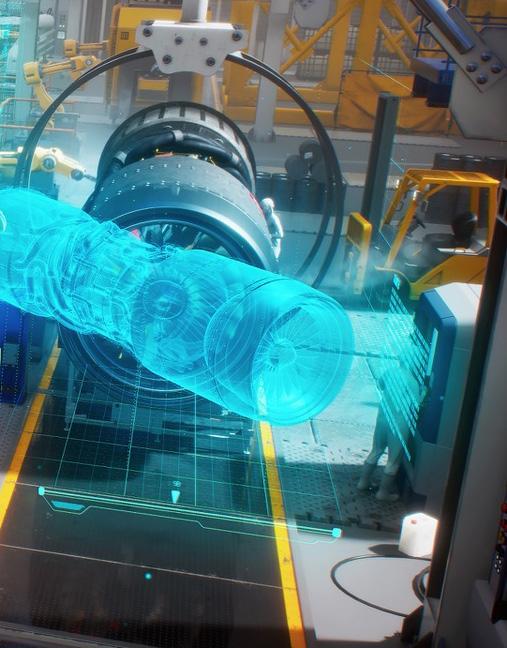
Department of Energy Office of Science laboratory, revealed that AI/ML early experience in the industry has demonstrated the potential of AI/ML for a wide range of applications, including predictive maintenance to improve real-time monitoring of equipment performance to reduce the likelihood of unexpected failures; quality assurance to identify product imperfections and support factory floor error detection; energy forecasting to improve sustainability and manage energy needs; safety and
security to mitigate cybersecurity risks and rapidly detect and flag unsafe practices; generative design to drive rapid topology optimization in product design; and experimentation to simulate normal and anomalous behavior without needing to run disruptive tests on the actual manufacturing process.
“The rapid evolution of AI/ML technologies offers an unprecedented opportunity to transform the manufacturing industry,” according to the lab study.
Siemens can help manufacturers create a comprehensive digital twin, which can used to design, simulate, and measure performance of a product or process even before they begin to build a factory. Picture courtesy of Siemens
Now there is the concept of digital twins, where engineers create simulations using AR with ML to duplicate a system’s operational conditions using a virtual model of a prototype that can be tested and retested without the need to produce an actual product.
Market research firm MarketsandMarkets reported in June, 2022, that the global digital twin market was worth $10 billion in 2023, and was expected to grow to $110 billion by 2028, with most of that growth concentrated in North America.
General Electric and Siemens are among dozens of companies contributing to the digital twin trend.
Siemens claims that digital twin approach drives “continuous optimization throughout the product and production lifecycle, enabling fast product introduction, flexible manufacturing, and data-driven performance optimization.”
“By examining ‘what if” scenarios and predicting future performance with the digital twin, you can be sure that your product and production will work exactly as you designed and planned,” Siemens states on their website. “The net result is a faster, more detailed study of a product’s capabilities without the time and expense of actually machining and assembling that product.”
Aerospace engineers, working on more and more complex devices and systems (such as spacecraft that can mine asteroids and return samples, autonomous earth-orbit satellites with optical inter-satellite laser links, passenger jets with advanced supersonic propulsion systems traveling at twice the speed of today’s commercial jets) are beginning to rely on the digital twin method to show them what works and what needs work.

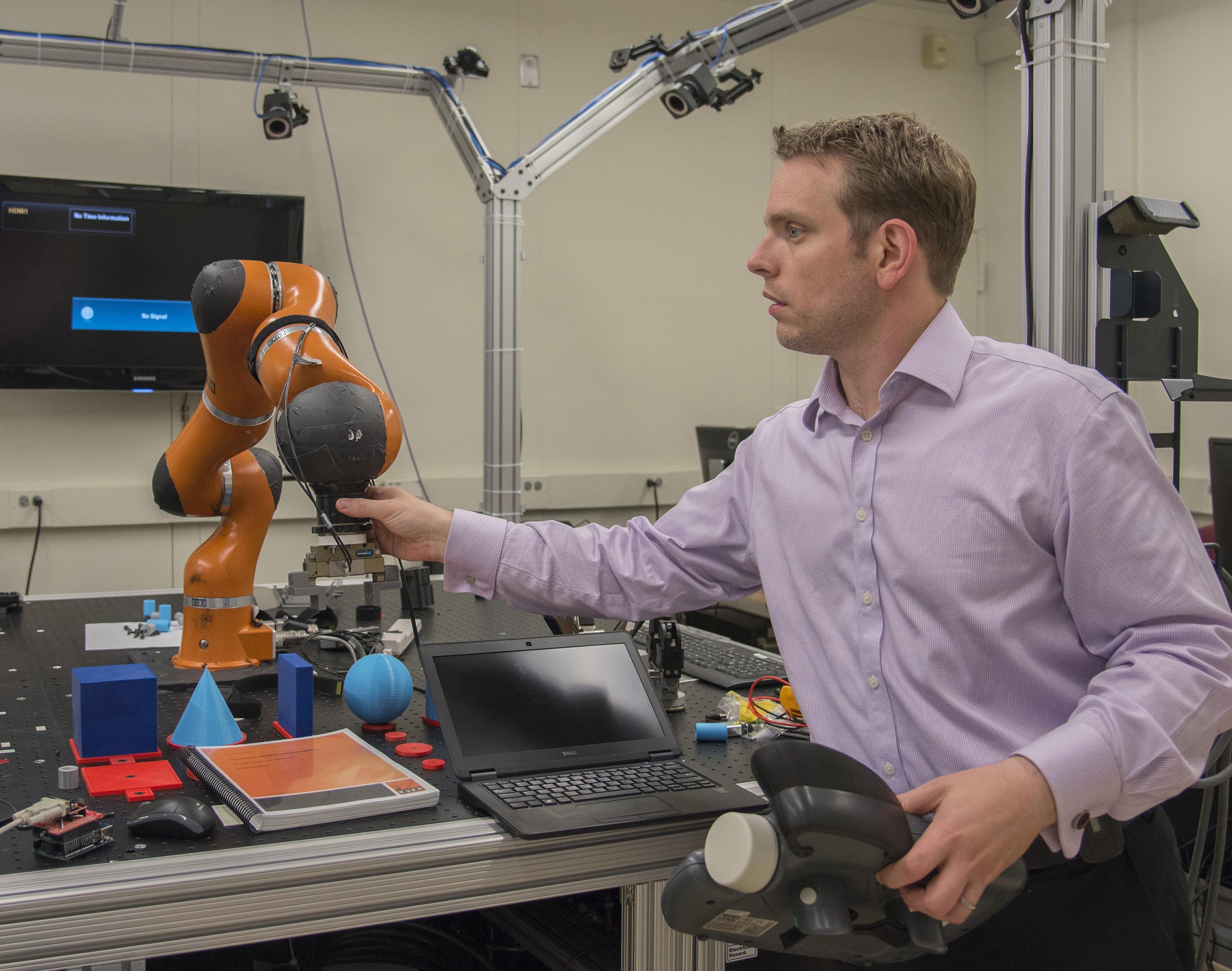
The other thing people are talking about doing is using digital twins to do real-time corrections to the processes, according to Douglas Bristow, the associate professor in the Department of Mechanical and Aerospace Engineering, and director of the Center for Aerospace Manufacturing Technologies, at Missouri University Science and Technology in Rolla, Missouri. “So if the digital twin shows that some anomaly has happened in the process, rather than waiting for somebody to discover that in quality control, and an engineer to figure out how best to address that, it might directly interject into the process and make some changes in real time,” he told BXJ. “As a general concept, I think there’s a lot of excitement
about digital twins. But the actual implementation lags quite a bit behind.”
Missouri S&T recently ramped up a 5,000 square foot space, and in two years, expect to open a 40,000 square foot high bay manufacturing space with another 80,000 square feet of labs and offices—all centered around industrial advanced manufacturing processes and collaborations with industry.
Similar to digital twins in their disruptive effect on manufacturing, but different on other levels, are collaborative robots, or cobots. They
differ from industrial robots in that they are responsible for repetitive, menial tasks working alongside a human who completes more complex and thought-intensive tasks, according to a description offered by the Association for Advancing Automation.
Safety is a main feature of cobots because of their proximity to the human operator and the joint manufacturing processes they do with the robot. AI technologies are being used to aid in the communication of intent between human and robot, based on voice, gesture, gaze, and explicit commands.
But there are still shortcomings, according to a group of mechanical and aerospace researchers from an article published in the November, 2020 issue of Journal of Manufacturing Science and Engineering. “A higher cognition level of interactions focused on shared workpiece activities still requires further research to develop robots with reliable mental models of their human counterpart to dynamically generate the corresponding motion-adaptive to human behavior.”
The market for collaborative robots was worth approximately $600 million in 2018, according to Interact Analysis, a technology research company, and is expected to reach $7.5 billion by 2027, accounting for 29% of the entire industrial robot market.
The collaborative robots market is dominated by a few major manufacturers, including Universal Robots, headquartered in Novi, Michigan, a 30 minute drive northwest from Detroit; Boston Dynamics, in Waltham, Massachusetts, working on developing humanoid robots; and Zurich-based ABB Robotics, which recently acquired Swiss startup Sevensense providing AI-enabled 3D vision navigation technology for autonomous mobile robots.
An autonomous AI humanoid robot developed by Sunnyvale, California, startup Figure, will be showing up in the automobile manufacturing operations of BMW soon, after Figure signed a commercial agreement with BMW in January with the goal of deploying autonomous humanoid workers to “support us on a global scale.”
There is a general fear in advanced manufacturing that robots will take away


Kent County, founded in 1642, is located on the Eastern Shore of Maryland, directly east of Baltimore. The boundaries include the Sassafras and Chester Rivers, the State of Delaware, and the Chesapeake Bay. The county is located within 90 minutes of three international airports and three major seaports. Route 301 provides a major north-south artery for commercial transportation. Route 301 Kent County’s major industries include Agriculture, Education, Healthcare, Manufacturing, and Tourism. Route 301 provides a major north-south artery for commercial transportation. Route 301 provides a major north-south artery for commercial transportation, linking Maryland to Delaware and making the area a perfect location for warehouse and distribution operations. A border-to-border, open-access, high-capacity, fiber-optic network with an international point of presence in the county encourages the growth and development of diverse businesses such as data centers, call centers, cyber security, telemedicine, training and education centers. In addition, Kent County is the perfect locale for emerging technologies including environmental, aquaculture, and agriculture businesses, with over 133,000 acres of farmland, 265 miles of tidal shoreline, and close proximity to federal laboratories and research centers. Chestertown, the county seat, is home to a Maryland Arts & Entertainment District and a state Enterprise Zone offering tax credits for job creation and investment. Commerce Zone and Job Creation Tax Credits are available throughout the county. Kent’s rural setting provides an excellent quality of life with easy access to urban areas.
Kent County Economic Development promotes activities that seek to enhance the business community, the services and income opportunities available to residents, as well as the social well-being and quality of life for all members of the county. They take pride in our economic diversity by hosting and providing opportunities for various industries to grow and prosper. With over 130,000 acres of agricultural land, 265 miles of shoreline, and located in close proximity to major US highways, Kent County’s location has been a strategic asset for many of our industries while providing the rural lifestyle that many desire. Kent County Economic Development supports existing and new businesses in growth and prosperity, focusing on improving the County’s business climate. The importance of a healthy business environment is critical to maintaining the quality of life the County has enjoyed for over 400 years. Economic Development coordinates with public and private organizations for sustainable economic growth. For more information, contact the Economic Development Office at 410-810-2168, or visit www.kentcounty.com/business.
jobs for good. It’s been considered a sort of dark side to advanced manufacturing.
But that thinking is changing.
Mark Maybury, vice president of commercialization, engineering and technology for Lockheed Martin, speaking at the SciTech 2024 conference in January, talked about the results of a ten year study of 1,900 manufacturers that found companies that didn’t adopt robots fell behind, and were forced to reduce employment by 20%. Those that introduced robots increased employment by 50%. “That gets the attention of economists, and that gets the attention of CFOs,” Maybury said.
How robots should be introduced into the workforce is to identify their abilities, and reskill those working with them, he said. “We identify the work that needs to be done. Then we focus on the people.”
It’s about what those people need to do now, not what they did in the past, he said. “They need to understand analytics. They need to have STEM backgrounds. They also need to collaborate in a more complicated world, not just with people, but also with robots. We have to teach operators how to work alongside increasingly collaborative robots.
“We should educate and empower the minds that we do have. We can teach people to program robots with advanced training. Things that you needed a PhD for 10 years ago, we can teach now in two hours. So within two weeks, we’ve got folks who have high school educations programming robots on the floor.”
A McKinsey study found that automation can increase scale and speed of production. For example, Nissan has halved the time it takes to move from final product design to production because of their unique automated system, part of the Nissan Intelligent Factory initiative.
BMW was able to reduce machine downtime by 30 to 40 percent through AI-enabled condition-based maintenance.
Results like these that make it clear that not only is it time to transition a manufacturing operation into more use of digital tools, it’s also time to help boost those companies that understand the competitive advantage such a transition represents but are unable to implement plans due to worker population education or work culture struggles.
This has resulted in some manufacturers having pilot programs to make the transition who are not seeing bottom line results yet—a situation called “pilot purgatory,” denoting trouble in scaling their digital retooling operation as the transition effort stalls.
And in a sort of big picture assistance for transitioning, the Defense Advanced Research Projects Agency recently commissioned a Context Reasoning for Autonomous Team (CREATE) program, funding projects for GE and others to enable machines to more intuitively and autonomously react to operational situations like humans.
The real story in advanced manufacturing is that the processes are getting more interesting—and more complicated. “The digital connection to everything is becoming more ubiquitous,” Bristow said, adding that he sees students at Missouri S&T using software to connect their phones to the manufacturing process and make the machine behave differently with the push of a button. “They seem to be more comfortable working through a digital interface to the processes. It’s creating a lot of interesting opportunities to just work directly off of data and improve processes,” he said. X
Indian River County – Vero Beach, Sebastian, Fellsmere - strikes a perfect balance between business and pleasure. Those who live, work or visit the area find that the local communities are safe and loaded with ecological, cultural, educational and technological amenities. Many corporate-level executives have located their companies to the area because of the executive’s positive vacation experience, or perhaps they own a winter home on Vero’s barrier island.
Located on Florida’s east coast, midway between West Palm Beach and Cape Canaveral, Indian River County is within three hours of over 17 million consumers, or 90% of Florida’s population. It has easy access to markets but is far from urban sprawl, traffic and congestion. Visitors from other parts of Florida are amazed, and pleasantly surprised, at the county’s lack of traffic. The area is rich in history and natural resources, with 26 miles of unspoiled beaches and scenic lakes, plus some of the best bass fishing available in Blue Cypress Lake. It is also the center of the world famous Indian River Citrus District.
Indian River County is a cost-competitive location for new or expanding businesses. It has hundreds of acres of low-cost land available for development, much of it located near I-95, a major north-south transportation route along the east coast. The county
offers competitive property tax rates, and Florida has no state income tax.
The Opportunity Zone initiative offers investors an even greater reason to consider Indian River County, FL. All properties west of I-95 in Indian River County are designated as an Opportunity Zone and zoned for industrial use, including two shovel-ready industrial parks. State and local incentives are also available to relocating and expanding companies, including property tax abatement, tax refunds, and job training grants.
An available and trainable workforce of approximately 638,000 within an hour’s drive time adds to the county’s appeal as a desirable location. Indian River State College (IRSC) has five campuses located throughout the region, offering 2-year and 4-year degrees as well as several industrial and technical certifications. IRSC is very successful in securing training grants for local employers. They can develop specially-designed training programs in a matter of weeks rather than months. Because location is central to success, Indian River County isn’t just where you want to be – it’s central to where your business ought to be. It has the perfect blend of everything the Sunshine State has to offer.
For more information on locating your company to Indian River County, Florida, contact Helene Caseltine, Economic Development Director with the Indian River Chamber of Commerce, at 772-5673491 or helenec@indianrivered.com. Or, visit their website at www.indianrivered.com .


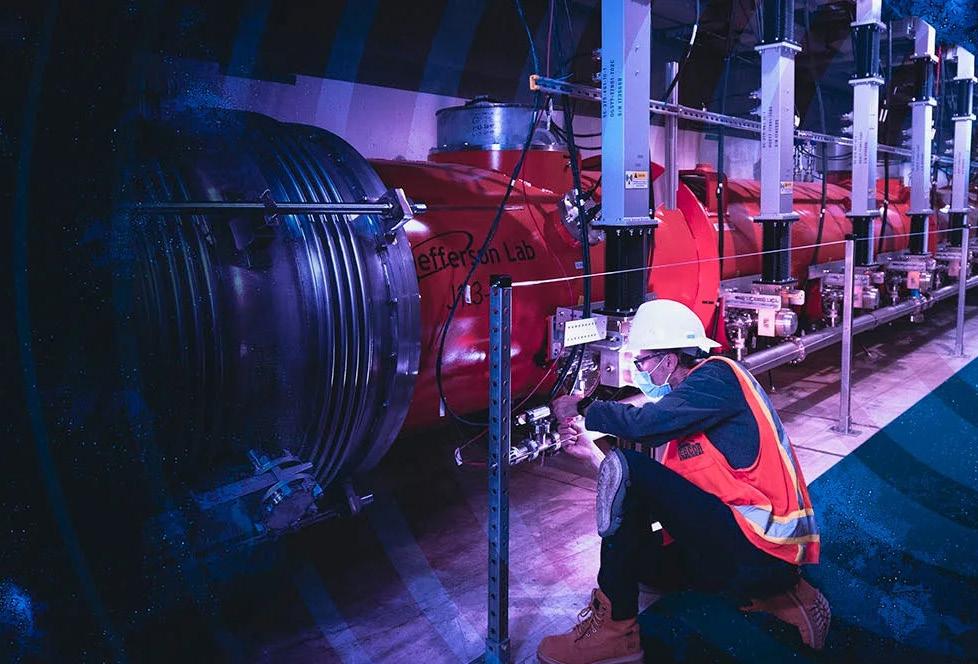
Sustainable energy rules. Now more viable options being discovered and utilized for clean energy optimization, all with plenty of financial backing

All forms of renewable energy are quickly moving to the top of the list for energy development, some faster than others.
Wind, solar, hydropower, bioenergy, geothermal energy and newcomer hydrogen power have all become more commonplace over the years, creating their own economic powers within the states that are pursuing clean energy development.
In fact, renewable energy generates about 20% of all U.S. electricity, with wind leading the way (9.2%), according to the Office of Energy Efficiency and Renewable Energy. Texas has the most wind generating operations, followed by Washington, California and Iowa, according to data from the U.S. Energy Information Administration (USEIA).
In the first quarter of 2022, Texas led all states in overall renewable energy production, accounting for over 14% of the country’s totals, due in large part to the state’s wind energy program.
Over the last year, U.S. utility scale clean energy had over $270 billion in investment, 83 new manufacturing facilities, and nearly 30,000 jobs, according to American Clean Power (ACP).

Among the 83 manufacturing facilities built over the last year were 52 solar manufacturing facilities, 14 utility-scale battery storage manufacturing facilities, 11 wind power facilities, and six offshore wind power manufacturing facilities.
The U.S. Wind Watch, a report by the American Clean Power Association (ACP), is forecasting that over 90 gigawatts (GW) of wind energy will be installed within the U.S. by the end of 2028, including offshore wind projects, onshore wind development and repowering of aging wind farms.
There is other big news in solar energy as well. The USEIA predicts that solar energy will lead growth in U.S. power generation for the next two years. As a result of new solar projects coming on line this year, the USEIA forecast that U.S. solar power generation will grow 75% from 163 billion kilowatt hours (kWh) in 2023 to 286 billion kWh in 2025.
The U.S. added 6.4 GW of small-scale solar capacity in 2022, the most ever in a single year, due in part to cheaper solar panels and installation costs. Average solar construction costs across all solar panel types fell 8%.
Here’s a look at three of the largest clean energy companies in the U.S.:
• Pattern Energy Group, headquartered in San Francisco, California, recently closed $11 billion in financing and started full construction of SunZia Transmission and SunZia Wind. The two construction projects are being billed by the company as the largest clean energy infrastructure projects in U.S. history. The transmission line will stretch about 550 miles from central New Mexico, transporting electricity from massive wind farms to populated areas as far away as California.
• Duke Energy, headquartered in Charlotte, North Carolina, owns and operates power generation assets in North America including natural gas, coal, wind, solar, energy storage, nuclear, and microgrid projects for 8.2 million retail electric customers in six states, and 1.6 million natural gas customers in five states. It is planning to invest over $145 billion over the next ten years as part of a clean energy transition to develop critical energy infrastructure. The company has a goal of exiting coal as an energy source by 2035, and recently announced plans to add regulated renewables at a rate of 30,000 megawatts (MW) by 2035—or five times more than what is on their system today.
• Clearway Energy Group, also based in San Francisco, California, operates in 34 states, mostly in California and the upper-Atlantic states. The company is currently building a $250 million, 152 MW wind project in Bingham County, Idaho, that will generate enough electricity to power 41,000 homes each year. In November, 2023, the company announced nearly $1 billion in new financing.
But coming on strong is green hydrogen power (produced by electrolysis using renewable energy sources, instead of using fossil fuel sources as in years past).
Hydrogen has the highest energy content by weight of all known fuels, according to a report by the U.S. Department of Energy’s (DOE) Hydrogen Program Plan, concluding that hydrogen, “offers advantages that unite all of our nation’s energy resources—renewables, nuclear, and fossil fuels—and enables innovations in energy production and end uses that can help decarbonize three of the most energy intensive sectors of our economy: transportation, electricity generation, and manufacturing.”
Active in the hydrogen sector include companies such as Latham, New York-based Plug Power; Ballard Power Systems, headquartered in British Columbia, Canada, makers of hydrogen fuel cells for buses, commercial trucks, trains, and marine vessels; and Siemens Energy in Munich with U.S. headquarters in Orlando, that recently opened a gigawatt factory for electrolyzers in Berlin.
Plug Power, for example, completed the installation and commissioning of an electrolyzer system at an Amazon fulfillment center in Aurora, Colorado, according to a press release. The one-megawatt (MW) proton exchange membrane electrolyzer is producing low-carbon hydrogen to fuel more than 225 hydrogen fuel


cell-powered forklift trucks at the site. The hydrogen produced by the electrolyzer will be compressed on site and stored in a gaseous hydrogen storage tank for use by the forklift trucks.
The company also recently started operation of one of the country’s largest liquid green hydrogen plants in Woodbine, Georgia. It’s designed to produce 15 tons of liquid electrolytic hydrogen every day.
According to Interact Analysis, hydrogen energy storage is in the pilot stage. There have been small-scale pilot R&D projects of hydrogen energy storage in the United States since 2004; today there are 20 hydrogen energy storage projects in the country.
The U.S. Inflation Reduction Act (IRA), passed in August, 2022, offers funding, programs, and incentives to accelerate the transition to a clean energy economy.
Since then, there have been more than 265 major projects announced in 21 states, with $108 billion in private sector investment, according to Bob Keefe, executive director of a national nonpartisan group of business leaders, Environmental Entrepreneurs, and the former senior press secretary for the National Resources Defense Council.
There are about 3.3 million people who now work in clean energy in every state and in every congressional district in the country, Keefe told BXJ. “The interesting thing is that this is resulting in investments and economic development in places of the country that a lot of us don’t necessarily equate with clean energy or clean vehicles,” he said.
For example, Michigan and Illinois have about 124,000 clean energy jobs each. Minnesota has nearly 60,000 clean energy jobs.
It’s not just these direct investments that are happening, he said, it’s also the supply chain that goes into it. “We’re seeing battery plants pop
up in the Southeast for instance. But we’re also seeing lithium mining operations and processing operations begin to pop up in places like North Carolina and Louisiana. We’re seeing silica processing factories starting to pop up.”
These are industries that America just wasn’t competitive in previously, Keefe said. “Who would have thought we’d be building solar panels and batteries in America, which were industries that were dominated and continue to be dominated by China and other foreign countries. Suddenly we’re back in the game. And that is driving what I like to say is the biggest economic revolution in this country in generations.”
In a letter to Congress in March, 2020, Keefe wrote that investments in clean energy and cleaner vehicles will promote broader economic recovery. “Clean energy stimulus dollars will spur long term job creation, leverage private investment and continue to save Americans money with every energy efficiency project, every rooftop solar installation and every fill-up at the pump in an electric, hybrid or more efficient car,” he wrote.
In January, the Bureau of Land Management revised a long-held policy to open 22 million acres of federal land for solar development, as outlined in the document Solar Programmatic Environmental Impact Statement. Solar energy advocates hailed the move, but were quick to point out that there are still 80 million acres of federal lands open to oil and gas development.
And the DOE Office of Clean Energy Demonstrations (OCED) recently announced the selection of a consortium to help accelerate commercial liftoff of the clean hydrogen economy and support the launch of the Regional Clean Hydrogen Hubs (H2Hubs). The consortium will design and implement demand-side support mechanisms for unlocking the
market potential of the H2Hubs.
According to a press release, over the next six to nine months, DOE will work with the consortium and the H2Hubs to design robust demand-side support measures that will facilitate purchases of clean hydrogen produced by H2Hub-affiliated projects to reduce climate pollution, create good jobs, support clean air, and advance U.S. competitiveness in various end use sectors, including energy-intensive industry and heavy-duty transportation.
There is much underway for clean, sustainable and renewable
Southwest Louisiana (SWLA) is a five-parish area intersecting the Acadiana and Central Louisiana regions. It is composed of the following parishes: Allen, Beauregard, Calcasieu, Cameron, and Jefferson Davis.
Southwest Louisiana has the ideal export situation: a concentration of pipelines supplying cheap, abundant natural gas; existing infrastructure for energy production and transportation; deep-water shipping access and shallow-draft inland waterways; a skilled workforce trained to serve industrial needs; and a community that welcomes and embraces industrial growth.
SWLA is part of the Gulf Coast Industrial Corridor, where petrochemical exploration, transportation, and production are commonplace. The region is also home to a thriving lumber and timber products industry, farming and agriculture, including aquaculture, fisheries and other maritime industries.
The Lake Charles Metro Area is a corridor of heavy industry, home to some of the country’s largest petrochemical refineries and LNG export facilities, plus downstream manufacturers of refined products, such as plastics and chemicals.
Oil exploration and production are historical mainstays of the SWLA economy. The upstream industry, including natural gas production, maintains a strong presence due to oilfield service companies and a skilled workforce.
SWLA is a major center for the U.S. liquified natural gas (LNG) export industry. Cheniere LNG, Cameron LNG, and Calcasieu Pass-Venture Global LNG were among the first LNG export facilities operating in the U.S., with even more proposed for construction in this area.
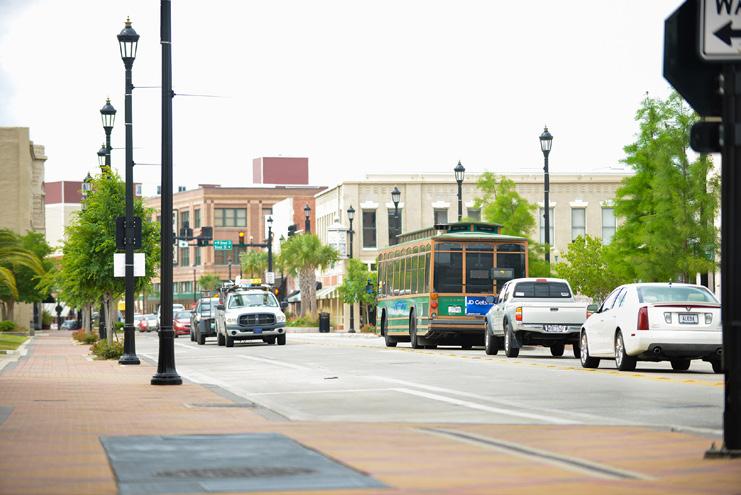
energy development. The momentum is building, and going in the right direction, according to Keefe.
“As a journalist, I covered the rise of the Internet. I covered Google and Apple. And this economic transition (to clean energy) is bigger than all of that, in my opinion. We haven’t seen anything like this before. You have a demand that’s being driven to meet the nation’s climate goals. We’ve got to figure out how to meet those goals. And those goals are being supported and driven by the full faith and backing of the U.S. government.” X
SWLA is home to numerous gaming resorts, live music venues, festivals, parks, and recreational facilities. The Lake Charles Metro Area offers more than 6,000 hotel rooms for hosting local conventions, tournaments, and gatherings of all kinds.
SWLA is home to McNeese State University and SOWELA Technical Community College, where they are constantly evolving to prepare local talent for the diverse industries of tomorrow.
The Port of Lake Charles is the premiere multimodal facility serving SWLA. The Port is a deep-water port located approximately 36 miles inland from the Gulf of Mexico. Several other ports offer maritime transportation services across the region for both inland and Gulfbound traffic. The Lake Charles area is served by three Class I railroads, including the Rail Logix facility at Lacassine Industrial Park, a hub for rail-to-vehicle transloading. Lake Charles Regional Airport offers the only commuter airline service in SWLA, while Chennault International Airport is an industrial airpark serving charter flights. Proximity to Houston, Dallas, and New Orleans make SWLA a hidden gem in the logistics industry.
SWLA embraces agribusiness as a cultural and economic driver. A locally grown product such as rice is not only a major export commodity, but also a staple of the local cuisine. The same holds true for other crops like crawfish, sugar cane, and soybeans, in addition to cotton, timber, and livestock. The Wood Basket of Louisiana, a vast area of planted pine forests, has allowed sawmills and other forest-related industries to thrive in Beauregard and Allen parishes. With lush forests, farmlands, and fisheries, along with a warm climate and logistical access, Southwest Louisiana’s abundance is appreciated locally and around the world.
For more information on Southwest Louisiana, please contact the SWLA Economic Development Alliance at 337-433-3632 or visit www. allianceswla.org or www.chooseswlouisiana.com .




Top average wages, big growth in dozens of states, and a faster pace of lab discoveries combine to generate an economic boom time for all bioscience subsectors

Exciting developments in biosciences are underway in labs at universities and private research facilities across the country, inspired by increased demand for studying human diseases stemming from the pandemic, and appealing to a broader employment base in part because of advances in AI and ChatGPT.
A group of scientists from the U.S., Brazil and the U.K., writing about using ChatGPT for bioscience research, considered it a general-purpose technology with the potential to impact the job market and research endeavors in numerous fields. “Although similar models have been fine-tuned for biology-specific projects, including text-based analysis and biological sequence decoding, ChatGPT provides a natural interface for bioinformaticians to begin using large language models (LLM) in their activities. This tool is already accelerating various activities undertaken by computational biologists, ranging from data cleaning to interpreting results and publishing.”
One Cornell University experiment used 184 programming exercises from an introductory-bioinformatics course and evaluated a ChatGPT model to see if it could successfully complete basic- to moderate-level programming tasks. On its first attempt, ChatGPT solved 139 (75.5%) of the exercises. “These findings have important implications for life-sciences research and education,” researchers concluded. “For many programming tasks, researchers no longer need to write code from scratch. Instead, machine-learning models may produce usable solutions.”
The Biotechnology Industry Association (BIO) reported that the total economic impact of the biosciences industry on the U.S. economy was $2.9 trillion dollars in 2021, the same year

that the national biosciences industry employment reached 2.1 million jobs in more than 127,000 business establishments spread across every state and Puerto Rico.
Based on 10-15 percent annual revenue growth trends, the world bioeconomy could exceed $20 trillion by 2030, according to the National Intelligence Council Strategic Futures Group (NICSFG).
Biosciences industry employment growth has outperformed other knowledge-and technology-intensive industry sectors, such as tech and aerospace manufacturing. In fact, all five of the industry’s major subsectors—such as pharmaceuticals, agriculture and environment, medical devices, research laboratories, and specialized distribution— had double-digit jobs gains in research, testing, medical labs and pharmaceutical manufacturing in 2021.
California has 14,268 bioscience establishments, by far the most of any U.S. state, according to BIO, and employs 334,690 earning an average salary of $163,000. Florida, Massachusetts, New York, New Jersey, and Texas all employ over 100,000.
Many states have built impressive incubator or research centers in partnership with universities. Five of the top ten biological science universities are in California, with dozens more across the country.
One example is the 40,000-square-foot Sid Martin Biotechnology incubator funded by the University of Florida, the United States Department of Agriculture, and the Florida Legislature. The incubator does research in all areas of biosciences such as life sciences, biomedical research, medicine and chemical sciences.
The University of Florida is looking to expand their biotech AI research to agriculture engineering applications. The university already has courses in artificial intelligence available in all 16 colleges, from the arts to agriculture, and currently offers 230 AI and data science courses at the undergraduate, graduate and professional levels.
In 2020, the university stimulated AI research activity by awarding 20 faculty teams in varied disciplines $50,000 each to pursue AI-related projects.
The possibilities of human and ag bioscience research are intriguing.
For example, clustered regularly interspaced short palindromic
One of the larger concentrations of life sciences companies is in New York City. That industry now contributes $3.1B to the city’s gross metropolitan product.
Picture courtesy of the New York Economic Development Corp.
repeats, or CRISPR, is making headway in human disease treatment.
Researchers at Boston-based Vertex Pharmaceuticals demonstrated the first successful use of CRISPR treatment for sickle-cell anemia. It was used in the editing of DNA in bone marrow cells to help relieve sufferers from the pain of the disease, reduce the number of sickle cells in the body, and effectively cure this hereditary condition.
Using CRISPR in agriculture, researchers at Oregon State were able to edit genes in hop plants. The process can make hops resistant to mildew and control the plant’s alpha-acid levels, for a healthier hop plant that produces a less bitter beer.
Steven Strauss is the University Distinguished Professor of Forest Biotechnology in the Department of Forest Ecosystems and Society at Oregon State University (OSU). His biotech lab works mostly with forest trees. “CRISPR came along which was fantastic. Reliable, efficient, just all the objectives you want,” he told BXJ.
One of the chemicals in hops is xanthohumol, which is a chemical used for a whole variety of health benefits, including antioxidant, anti-inflammatory, immunosuppressive and cancer chemopreventive activities. “Xanthohumol extract from hops is exceedingly expensive,” Strauss said. “Very few people can afford it, and they can’t make enough of it. So we’re trying to make a hop that has much higher concentrations of xanthohumal, but not for beer. I mean, people don’t want to have extra healthy beer. We want to extract it as a pharmaceutical.”
He and his team are working with Fred Stevens, associate dean of research at OSU College of Pharmacy, and an expert in the biochemistry of hops. Stevens is seeing if the effects of the extract pans out through intensive peer-reviewed research. His research to date has created a market for xanthohumol used in the management of inflammatory bowel disease.
“One thing about CRISPR is that once you have a genome sequence—and now we have a few different hop genome sequences— you can look in there and compare them to the genomes of other species that we know more about, and have been studied much more,” Strauss said. “We can deduce what genes we think are likely to be involved in xanthohumol biosynthesis, or myrcene, one of the terpenoids that give beer its flavor. You could say, if I turn it up,

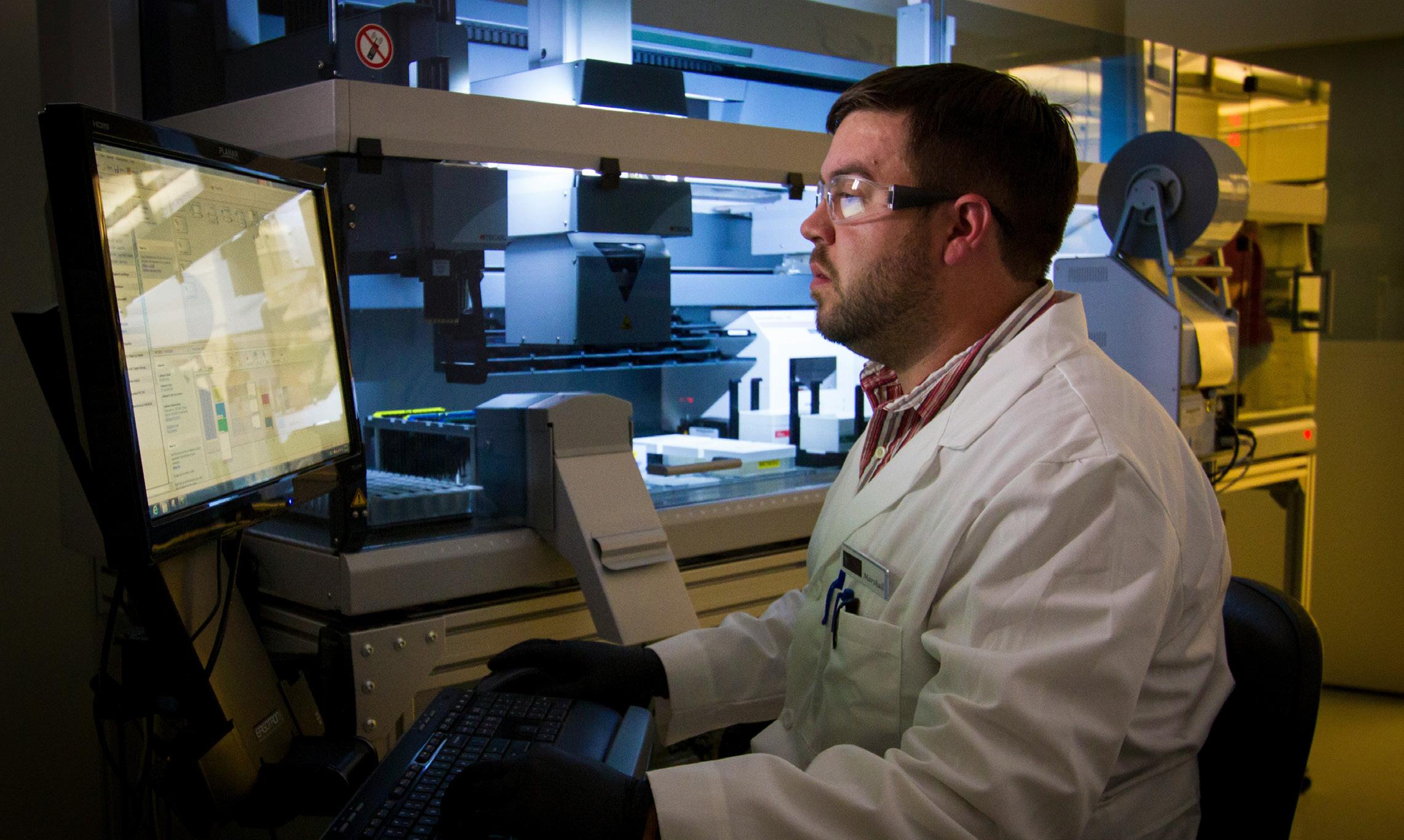
the beer might be more bitter, which might be interesting for some growers. CRISPR is very enabling because you can take that genome information and really see what it means and how you might use it, which is all we’re doing.”
The convergence of technologies in biotechnology and life sciences such as CRISPR will accelerate discovery and predictability in biotech design and production, the NICFG reported, making it possible to:
• Visualize, measure, identify, and manipulate biological systems at molecular scales.
Oregon State University researchers using CRISPR technology found that genetically modified yeast yields intense hop aromas in beer.
• Treat genetic instructions in DNA, RNA, and amino acids like a language that can be written, edited, and executed with high precision to synthesize useful materials or organisms.
• Collect, digitize, store, and analyze genetic instructions from many thousands of people, along with their physical, mental, and health traits, to correlate how specific genetic instructions interact with the environment to produce distinct traits.
• Combine complex biological and nonbiological processes, such as bioelectronic interfaces for sensing or stimulating biological systems in support of medicine, agriculture, and manufacturing.


Wearable medical devices—in the form of wristbands, watches, patches and even clothing—are coming on the market in a flurry. One recent example: The physiochemical-sensing electronic skin being, being developed by researchers working with the California Institute of Technology. It’s a wearable sensor that can provide 24-hour continuous monitoring of nine different markers of stress, including glucose, lactate, uric acid, sodium ions, potassium ions and ammonium.
The wearables medical devices market is expected to reach $429 billion by 2030, according to Fortune Business Insights. Deloitte Global annual technology, media and telecommunications prediction report found that, by the end of 2024, 440 million wearable device units will have been sold.
These predictions and developments will include such amazing developments as the bio-printing of tissues, and the creation of genetically tailored animals to produce human organs compatible for transplantation.
According to BCC Research, a market research company, in 2021, the global market for bioprinting is expected reach approximately $5 billion by 2027. There are already a handful of bioprinting companies the U.S., Canada, Japan and Russia.
One example is 3D Bio Corp, spun out from Cornell University. It is working to develop near-term regenerative medicine applications of bioprinting, and currently has a clinical trial underway to treat microtia, which is a birth defect stunting the growth of a baby’s ear.
A small biopsy is performed on the patient’s microtia ear remnant, sent to 3D Bio’s manufacturing facility where the cartilage cells are isolated from the biopsy, expanded in cell culture, and then “printed” into the shape of the patient’s normal ear using 3D Bio’s printing technology. The newly created “ear” is then sent to the clinic and implanted into the patient in an outpatient procedure.
Another 3D bioprinting company, Organovo, a clinical stage biotech company in San Diego, bioprinted liver tissue in 2014. The following year, they generated fully functional human kidney tubular tissues.
3D printing like this is seen as a revolutionary way to test the toxicity of pharmaceuticals on a human-like organ, instead of using animals like mice which may or may not have the comparable biology for specific pharmaceutical testing because of differences in human/animal physiology.
The 32,546-square-foot Sid Martin biotech incubator at the University of Florida was named best incubator in the world for the third time in June, 2020. It has incubated 108 startups since it opened in 1995.
Picture courtesy of University of Florida.
Saving animals from experimentation was the driving force behind Organovo teaming up with L’Oreal to advance the development of synthetic skin for product evaluation and other areas of advanced research—a first-of-its-kind partnership between a bioprinting company and a beauty product manufacturer.
Steps are being taken now to create an organ “cassette”, which is a small piece of artificially created organ tissue, that can be inserted into a patient’s failing organ to sustain it until a transplant organ becomes available.
Complete organ bioprinting is being investigated now. For example, under a new $26.3 million contract from the U.S. Department of Health and Human Services and the Advanced Research Projects Agency for Health (ARP-H), researchers at Stanford University are attempting to bioprint a fully functioning human heart in one hour and implant it in a living pig within five years.
The goal of ARP-H is to bioprint the human heart and other of the more in-demand organs (such as kidneys), and completely eliminate the need for standard heart transplants. Currently there are 100,000 people in the U.S. waiting for transplants, and 6,000 die each year due to lack of access to compatible organs.
Researchers are predicting that with, bioprinting and other advancements in bioengineering, eradication of most common human diseases may be possible within the next 20 years. X


Projects from across both peninsulas will receive support from the Strategic Site Readiness Program, prepare sites for investment. More than half of the awards will go toward site preparation on existing brownfield sites.
LANSING, Mich. – Governor Gretchen Whitmer joined the Michigan Economic Development Corporation (MEDC) today in announcing approval of $87.5 million in grant funding for 18 projects across the state of Michigan through the Strategic Site Readiness Program (SSRP) to support the state’s efforts to compete for and win transformative projects.
Through this funding for strategic site readiness and collaboration with local, regional and energy partners, communities across Michigan will experience increased economic development opportunities to support in their business development efforts.
“These grants will fund 18 projects across Michigan, preparing us to win more manufacturing projects creating thousands of good-paying jobs,” said Governor Whitmer. “Together, with a strong, bipartisan economic development toolkit, we are competing with other states and nations to bring home supply chains of cars, chips, and clean energy. We will get it done while making communities across Michigan—from big cities to small
towns—better places to live, work, and invest. Let’s move some dirt!”
Applications for the grants were accepted from September 18 to October 30, 2023. The MEDC received over 70 applications totaling $420 million in requested funding – more than four times the SSRP allocation – further demonstrating the significant need for advancing site readiness in the state of Michigan. Funding was awarded in nine of the state’s 10 prosperity regions, representing at least one grant for every region that submitted applications.
Of the 18 awardees, 10 are brownfield sites that will be receiving 49 percent of the award funding; the remaining awardees are greenfield sites throughout the state. Creating a robust inventory of investmentready sites of all sizes will provide Michigan with increased opportunities for business attraction and expansion projects across the state.
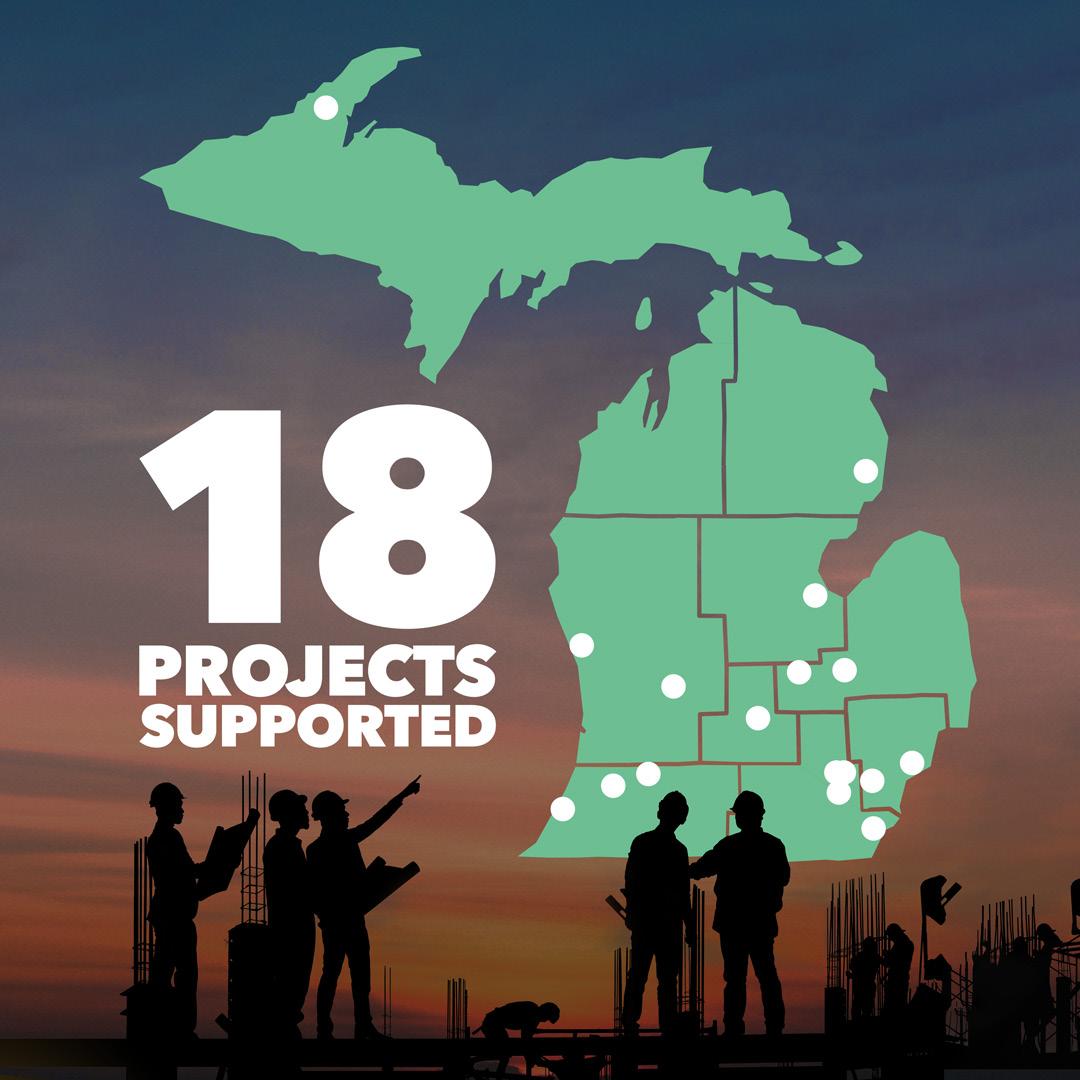























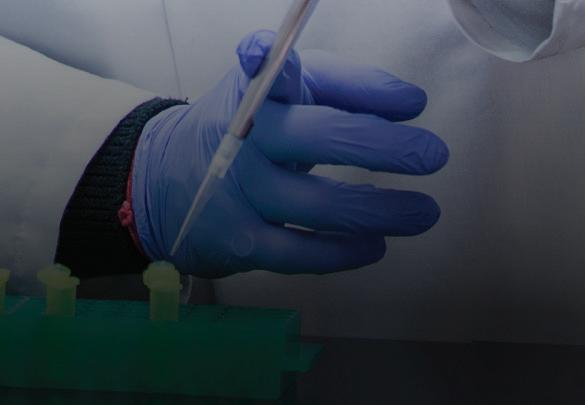








GENEMARKERS GENOMIC RESEARCH


As a top state for biomedical engineering graduates, Michigan is pioneering the next generation of medicine with advancements in everything from vaccine manufacturing to genomic research. Discover the world-class life sciences talent that make it all possible and seize your opportunity at MICHIGANBUSINESS.ORG
(by prosperity region)
Region 1
• Hancock Business & Technology Park, City of Hancock: $969,352
Region 3
• Oscoda-Wurtsmith Airport Authority Small/Medium Hangar Infrastructure, Oscoda-Wurtsmith Airport Authority: $500,000
Region 4
• Muskegon Heights Industrial Parks - West & East, Muskegon Area First (brownfield site): $121,200
• Covenant Business Park, The Right Place: $17,500,000
Region 5
• 3 Mile and Wilder Road, Bay Future (brownfield site): $4,161,500
Region 6
• Flint Commerce Center, Flint Genesee Economic Alliance (brownfield site): $5,900,000
• Corunna - Parmenter Rd, Shiawassee Economic Development Partnership: $435,000
Region 7
• Lansing RACER Trust Plant 6 Site, City of Lansing (brownfield site): $18,975,000
• Delhi College Road Site, Lansing Economic Area Partnership (brownfield site): $6,500,000
Region 8
• Southwest Michigan Commerce Park, Southwest Michigan First (brownfield site): $2,106,000
• Hartford Industrial Site, Market Van Buren (brownfield site): $467,250
•tBenton Harbor Data and Tech Park, a partnership between Cornerstone Alliance and developer Franklin Partners (brownfield site): $3,600,000
Region 9
• AICP - Lot 14, City of Saline: $15,350
• LAC Site, Monroe County Business Alliance: $82,310
• Latson Innovation Interchange Technology & Industrial Park, Ann Arbor SPARK: $6,500,000
• Pleasant Valley Development, Ann Arbor SPARK (brownfield site): $604,000
Region 10
• 440 Acres in Van Buren Township (Ecorse and Belleville Roads), Detroit Aerotropolis: $18,600,000
• DET Crosswind Runway, Detroit Economic Growth Corporation (brownfield site): $510,000
Total SSRP grant funding: $87,546,962
The remaining funds of the full $100 million SSRP allocation will support applications requiring more time and evaluation, additional needs that may come up later in the year and to have funds available to support sites that enter the site readiness certification program, which is scheduled to be launched this fiscal year.
Due to high demand on the limited funds, the MEDC has submitted a list of applications that self-identified as brownfields to the Michigan Department of Environment, Great Lakes, and Energy to review for potential assistance.
“With a resetting of the industrial landscape currently underway in the U.S., the communities and economic development agencies that are proactively preparing industrial sites and training the workforce of tomorrow will be the winners in this race – the outcome of which will determine which states and regions will lead in economic and equitable prosperity over the next 20-30 years,” said Maureen Krauss, President and CEO of Detroit Regional Partnership. “The approval by the MSF Board in the Strategic Site Readiness Program is paramount to Michigan’s success, and the Detroit Regional Partnership is aligned with the MEDC through our Verified Industrial Properties Program (VIP by DRP) to support our region’s commitment to ready more sites, to help Michigan win its share of the critical job creation projects.”
Established in December 2021, SSRP provides financial incentives to eligible applicants to conduct eligible activities on, or related to, strategic and large-scale sites in Michigan to attract and promote investment in the state.
The SSRP was among the several initiatives in the economic development bills signed into law by Gov. Whitmer in December 2021. Public Act 194 of 2022 authorized additional SSRP funding and directed it at specific SSRP categories, including a $100 million allocation for strategic sites where an end-user is unknown. Legislative approval of the transfer of those dollars from the Strategic Outreach and Attraction Reserve fund to the Michigan Strategic Fund was made in June 2023.
"On behalf of the MEDC, it is exciting to be able to support local communities in their business development efforts as they bring forth sites of all sizes to prepare for economic development opportunities in their region," said Terri Fitzpatrick, MEDC Executive Vice President and Chief Real Estate and Global Attraction Officer. "Thanks to Governor Whitmer and the Michigan legislature's continued efforts to attract business developments and grow the state's economy, these site readiness projects across Michigan will create meaningful impact throughout our state. While this is a good start, the demand remains substantial and will require continued funding for years to come."
Take a deeper dive into some of the site readiness projects being awarded across the state:
The development of an industrial park in Hancock, Michigan will help expand and diversify the economy in the Houghton/Hancock area, fitting with the strategic plan in Region 1. This new park builds on the success of the nearly full Industrial Airpark at the Houghton County Memorial Airport. This project will complete necessary infrastructure improvements, increasing capacity in electric, gas and water at the site and will remove the last hurdle to the site opening for business later this year.
“On behalf of the City of Hancock, we are thrilled to be awarded funding from the MEDC Strategic Site Readiness Program for our 40-acre Hancock Business and Technology Park,” said Mary Babcock, City Manager, City of Hancock. “This crucial funding will pave the way for the creation of shovel-ready sites, fostering new opportunities for businesses to flourish and grow. As a small community with limited resources, this support is a significant step forward—a game changer not just for Hancock but for our neighboring communities as well.
“Thank you MEDC for providing the funding to help the community of Hancock build their capacity for the Hancock Business and Technology Park to further compete in today's society,” said State Representative Greg Markkanen (110th District).
The Covenant Business Park site is one of the premier sites in west Michigan in terms of infrastructure, freeway access and community support for a project. Bringing utilities to this site is critical to the marketability of the site and the proposed structure includes 50% of total project costs coming from non-MEDC funds and includes a contribution from the property owner. Infrastructure improvements include increasing utility capacity to the site. The Right Place will work with the developer on funding gaps.
“It’s been our long-standing desire to see this site become a hub of good-paying job opportunities, and this grant funding will help make that a reality,” said Jerry Hale, Supervisor of Lowell Township who has served in the role since 2008. “This will not only cement the Lowell area as a top destination for companies looking to expand in West Michigan but will catalyze additional quality of life amenities like public recreation space and housing options. Plus, this will certainly have a positive impact on the local businesses in the area, including in Downtown Lowell.”
As the former Buick City site in Flint, the Flint Commerce Center is a major brownfield site that has been submitted to many potential employers. This project will significantly improve the marketability of the site by mitigating some of the serious risks identified by potential users who have chosen other sites. Site preparation includes removal of underground utilities, concrete slabs and foundations, and updating the sewer system.
“Brownfield redevelopment is not an easy task, but it is crucial to the success of communities like Flint, and we are grateful that our partners at the State of Michigan understand this,” said Tyler Rossmaessler, executive director of the Flint & Genesee Economic Alliance. “When complete, the Flint Commerce Center will create new jobs, attract new business, generate new tax revenue, and – equally important – create a new narrative for a property that has been underutilized for far too long. The Strategic Site Readiness Program is critical in achieving this success as it will support infrastructure improvements that are necessary in attracting new business and investment to this site, city, and region.”
“I applaud the Michigan Economic Development Corporation's decision to allocate $6 million for resolving a crucial storm sewer issue at Buick City,” said Sen. John Cherry (D-Flint). Overcoming this obstacle has been instrumental in advancing the redevelopment of Flint’s largest brownfield site, and I look forward to the economic
opportunities its completion will bring to Flint and Genesee County.”
The Lansing RACER Trust Plant 6 site is a brownfield site that is poised to be one of the most impactful projects of all the state's redevelopment. Currently limited by a number of risks from a site selector's perspective, this project will help the City of Lansing study those issues and make the site more marketable. Site preparation includes removal of underground utilities, demolishing old structures, site due diligence and developing remediation plans for future use of the site.
"I am excited to see these grant dollars invested in two important sites right here in Mid-Michigan,” said State Senator Sarah Anthony (D-Lansing). “Redevelopment of the RACER Trust site is key to revitalizing the Saginaw corridor, an avenue ripe for new economic and transportation ventures in our region. Investing in strategic site readiness will ensure the long-term success and sustainability of our neighborhoods."
“Lansing is an advanced manufacturing community, and we are proud of that heritage,” said Lansing Mayor Andy Schor. “Repurposing the old GM Fischer Body plant site, now owned by RACER Trust, is a tremendous opportunity for the City of Lansing. This is space that can be used for a variety of manufacturing options, but it is costly to clean up the property and prep it for re-use. I am tremendously thankful for the dollars being provided by Governor Whitmer and the MSF Board to make this important site ready and marketable for many exciting, new opportunities here in Lansing.”
"Our top priority for the region is to promote development by filling in the gaps,” said Bob Trezise, President and CEO at LEAP. “We are thrilled to see the initiation of development on this challenging urban industrial site, and we are committed to supporting the city of Lansing in this endeavor.”

The Michigan Economic Development Corporation is the state’s marketing arm and lead advocate for business development, job awareness and community development with the focus on growing Michigan’s economy. For more information on the MEDC and our initiatives, visit www. MichiganBusiness.org. For Pure Michigan® tourism information, your trip begins at www.michigan.org. Join the conversation on: Facebook Instagram LinkedIn, and Twitter. X

Indiana Governor Eric J. Holcomb and Secretary of Commerce David Rosenberg highlighted the 2023 economic successes in each focus area of the Indiana Economic Development Corporation’s (IEDC) strategic vision, concluding the seventh consecutive recordbreaking year for economic development in Indiana. In 2023, 208 companies committed to locate or expand in Indiana, investing more than $28.7 billion (+29% from 2022) in their operations and creating 21,866 new jobs with an average wage of $36.07/hour – or approximately $75,025 annually (+3.9% from 2022 and +10.2% the national average wage). This marks the highest capital
investment and annual record for average wages since the IEDC was established in 2005.
These economic development metrics are one component of the IEDC’s comprehensive, economic strategy designed to ensure all Hoosiers have greater opportunity to succeed. The strategic vision includes a focus on advancing economic development and industries of the future, growing entrepreneurship and innovation, investing in community development and rural areas and leaning into external engagement to share Indiana’s story and competitive advantages with the world.
“Indiana is thinking long-term and taking bold action to put Indiana at the forefront of critical innovations and to create a more prosperous future for Hoosiers,” said Sec. Rosenberg.
“Indiana is achieving unprecedented economic momentum that will catapult economic and community opportunities for Hoosiers for decades to come,” said Gov. Holcomb. “Our efforts to attract new investments and jobs, catalyze entrepreneurship and invest in quality of place are paying dividends – all while advancing high-tech industries to ensure that Indiana is at the center of tomorrow’s global economy.”
“Our strategic, proactive approach is delivering tangible results, attracting new high-growth industries like semiconductors, electric vehicles and clean energy production to Indiana. Paired with unprecedented investments in entrepreneurship and quality of life, Hoosiers can look forward to more supportive and vibrant communities, more in-demand career opportunities and more opportunities to create generational change.”
Notable strategic successes in 2023 include:
• ACCELERATING INDIANA’S COMPETITIVENESS: In partnership with the Indiana General Assembly, Indiana made bold strides to expand its economic development budget and modernize the state’s toolkit, increasing its ability to attract new investment and advance community development and talent attraction and retention efforts. The adoption of House Enrolled Act (HEA) 1001, the governor’s agenda bill, increases Indiana’s investment in economic development by $350 million from 2021 and 2022. Additionally, it enacted a number of priorities designed to make Indiana more competitive, such as creating a new $500 million deal closing fund, providing additional resources for megadeals over $5 billion, creating a new site acquisition fund for shovelready development, increasing funding for Manufacturing Readiness Grants and allocating another $500 million to expand quality of place and quality of life investments through the Indiana Regional Economic Acceleration and Development Initiative (READI).
• GROWING A GLOBAL ECONOMY: The IEDC also supported another robust year for foreign direct investment, with 37 foreign-owned businesses based across 17 countries committing to locating or growing in Indiana. Together, these firms plan to invest more than $20.6 billion (+184% from 2022) and create more than 8,509 new jobs (+34.8% from 2022) with average wages of $39.98/hour (+36% from 2022). Of these commitments, 18 are international businesses locating in Indiana for the first time, accounting for $5.3 billion in planned capital investment.
This includes notable announcements from companies such as Canadian Solar (Canada), Isotopia USA (Israel), Bastian Solutions (Japan), Bila Solar (Singapore), Endress+Hauser (Switzerland), and Arrow McLaren (UK).
• MAKING INDIANA INVESTMENT-READY: Indiana continues to prioritize site development efforts, ensuring the state is able to offer competitive sites and help companies invest and launch operations more quickly. Through the Strategic Sites Initiative, the IEDC is partnering with local communities to identify and prepare new sites; so far, the state has identified 417 new, nationally competitive sites ranging from 30-3,000 acres each.
Additionally, momentum continues to build at the LEAP Research and Innovation District in Lebanon. In April 2023, the state broke ground on the site’s first project – a $3.7 billion investment from Eli Lilly and Company to establish two manufacturing operations that will create up to 700 new jobs. The IEDC has more than $58 billion of potential investments in the pipeline for the site.
•BUILDING A NATIONALLY RECOGNIZED ECOSYSTEM: Indiana’s leadership in innovation and entrepreneurship continues to grow. Indiana was named the No. 1 state to start a business in 2023 by Forbes, and the state’s venture market surpassed $1 billion for the second consecutive year in 2022, ranking No. 2 for deal activity in the Great Lakes and Midwestern regions. Additionally, Indiana was named the 2025 host for the Global Entrepreneurship Congress – only the second U.S. location to host the annual convention in the event’s history.
•DRIVING US INNOVATION & MANUFACTURING: Indiana secured three new federal tech hub designations – defying the odds despite a 0.01% chance of winning all three. These hubs will bring new opportunities for investment, innovation, supply chain growth and job creation across technology, hydrogen energy and microelectronics, supporting critical U.S. initiatives to advance innovation, accelerate the energy transition and re-shore supply chains.
•INVESTING IN ENTREPRENEURS & SMALL BUSINESSES: The IEDC is leaning into entrepreneurship in unprecedented ways, assisting a record number – more than 10,000 – of entrepreneurs and small businesses in 2023 through various initiatives, investments and incentives. The IEDC launched a new $1 billion capital access initiative to provide credit and equity to
Hoosier entrepreneurs; committed another $2 million to growing localized, no-cost support for small businesses; and celebrated the second edition of Entrepreneurship Indiana, an annual publication honoring the entrepreneurial journey and highlighting 100 Hoosier success stories.
The IEDC works to support entrepreneurs and small businesses through the Indiana Small Business Development Center (SBDC) and Indiana APEX. While final data is still being compiled from all regional offices, the Indiana SBDC provided no-cost support to more than 6,396 entrepreneurs and small businesses in 2023, helping secure $96,769,188 million in funding and helping launch 451 new businesses. Additionally, Indiana APEX served 180 new clients, with a majority (62%) qualifying as women-, minority- or veteran-owned business enterprises, helping businesses secure more than $335 million in federal government contracts.
In July, the IEDC launched ConnectIND, a digital portal available in 11 languages to increase support for entrepreneurs and founders. The first-of-its-kind statewide listing of resources, programs and services for entrepreneurs is designed to connect current and aspiring entrepreneurs to the right resources at the right time, providing visitors with curated connections to Indiana’s robust network of support organizations, mentors, accelerators, capital opportunities and more. Since launching in June, ConnectIND has registered 1,000 users and garnered 22,000 unique site visitors, over 44,000 site views and over 30,000 sessions.
The IEDC also expanded accelerator support of early-stage startups with a record 7 gBETA accelerators supporting 40 entrepreneurs and continued support for Sports Tech HQ’s Techstars accelerator supporting 13 companies and sponsorship of HG Ventures HardTech Accelerator showcase.
• FUELING VENTURE DEVELOPMENT: As the #1 most active venture capital in the Great Lakes Region, the IEDC partners with Elevate Ventures to provide assistance to high-growth, highpotential startups and innovators, making capital more accessible and attracting additional private co-investment. In 2023, Elevate Ventures committed to investing more than $21.7 million in 112 Indiana companies through investment and grant programs utilizing the state’s 21st Century Research and Technology Fund. Since inception, and across all programs, Elevate Ventures has invested $172.1 million in Hoosier businesses, attracting $2.2 billion in capital from other sources (12.8-to-1 investment leverage ratio).
• INCREASING COMMUNITY DEVELOPMENT: The IEDC
marked a major READI milestone, awarding regions over $487 million of the initiative’s original $500 million. These funds will support 361 unique quality of place, quality of life, quality of opportunity and workforce projects and programs across all 17 Indiana READI regions. The state’s initial appropriation is being matched by additional public, private and nonprofit dollars, resulting in a combined $12.6 billion (26:1 investment leverage ratio) invested in Indiana’s communities.
Additionally, the state is allocating another $500 to the program through READI 2.0 to accelerate population growth and key quality of life indicators such as per capita income, career opportunities and educational attainment.
•INVESTING IN RURAL COMMUNITIES: The IEDC launched a Community Collaboration Fund in 2023 designed to grow the state’s entrepreneurial network in rural communities; the Indiana SBDC supported the launch of 179 new businesses and supported 5,283 jobs in rural counties in 2022 and 2023; and the Manufacturing Readiness Grant program has awarded grants to 152 small- and medium-sized business in rural counties since its inception in 2020, resulting in $312 million in capital improvements.
CITY: The IEDC served as a thought partner and supporter in two major developments in 2023 that are poised to bring new life to Indianapolis. In June, Indiana University and Purdue University signed an historic agreement to separate IUPUI, creating two separate and independent campuses in Indianapolis led by each of the globally respected universities and research institutes. The change will allow both universities to implement their own visions and establish new aspirations unique to their own strengths in order to meet the needs of an increasingly interconnected global economy.
And, earlier this month, Circle Centre Mall development plans were announced that will revitalize the heart of downtown Indianapolis, with Hendricks Commercial Properties purchasing and leading a $600 million mixed-use redevelopment featuring housing, offices, entertainment, modern retail space and open-air spaces.
• ENHANCING INDIANA’S GLOBAL REPUTATION: Gov. Holcomb and the IEDC continued a commitment to advancing global engagement and international partnerships, building new partnerships and fostering relationships abroad on Governor- and IEDC-led trips to Japan, South Korea, Portugal, France, the United Kingdom, Italy, the UAE and Australia. The state is also hosting the second iteration of its Indiana Global Economic Summit in May, building off the success of the inaugural event in 2022 that
convened more than 800 registrants and 30 international delegations.
• TELLING INDIANA’S BOLD STORY: In 2023, Indiana expanded and created new partnerships to better share its story nationally and globally as a bold state that is innovating and building the economy of the future. The IEDC shared the state’s story at major events, including the Consumer Electronics Show in partnership with the Indy Autonomous Challenge, the InterBattery Conference in South Korea, and at Inc. 5000 in Austin, highlighting the state’s economy and competitive advantages to key sectors.
In the fall, the IEDC rolled out a new brand – Indiana for the Bold – to reflect the state’s economic success and elevate Indiana’s identity and reputation across the world. Forthcoming campaigns will highlight Indiana’s economic environment and strengths; a strong business outlook; advancements across infrastructure, industry and innovation; and a ready workforce, showcasing Indiana’s true readiness for the future.
In order to continue this momentum and advance economic development opportunities for years to come, the IEDC is committed to continuing executing its strategic vision focused on advancing innovation and entrepreneurship, ensuring a diverse economic environment, creating the jobs of tomorrow, and retaining and attracting top talent by investing in quality of place.
Whether you want to relocate, expand, or simply get started, your business can flourish in Adams County. This community is special for numerous reasons, but what is at the top of the list? Our people. The kindness and work ethic found here are second to none. You’ll be proud to call them your employees, neighbors, and friends.
Adams County is made up of diverse businesses, but in particular, they have a strong tradition of manufacturing. Smith Brothers of Berne and Formula Boats are great examples of this long-lasting legacy.
They are also well-known in the leisure industry, including RVs, boats, cars, and more. No matter what industry you specialize in, the blue collar values found in Adams County will serve your company well.
Adams County is excited about business growth, and looks to foster that growth through tax abatement assistance. The Adams County EDC (ACEDC)will help facilitate this process with each municipality.
The ACEDC has Revolving Loan Funds (RLF) available to new or existing Adams County businesses. This low-interest loan program provides gap financing for businesses that are unable to fully secure needed capital from other sources.
Adams County is a part of BizFTZ, the Foreign Trade Zone program that operates in the twelve county region of Northeast Indiana. Businesses in Adams County that import and export can easily take advantage of the benefits of operating in a foreign trade zone in the Alternate Site Framework (ASF) Program. The ASF Program saves time and money, encouraging economic development as well as U.S. exports.
With over 35,000 residents and growing, Adams County continues to thrive. Although it’s divided into 12 civil townships, four different communities make up the heart of Adams County. From bigger cities to small towns, traveling around the county is a trip worth taking.
For more information, please contact the Adams County EDC at 260724-2588 or visit their website at www.adamscountyedc.com

Wired for Growth A combined $12m in investments is expanding fiber-optic and other broadband networks across 200 miles of Carroll County and bringing highspeed, low-cost internet to 4,500 homes— that’s half of all the homes in Carroll County. The investments are coming from Fiberhawk, Comcast, Broadway Broadband and Mulberry Telecommunications. The enhanced internet-connectivity across Carroll County will be a major upgrade for current and future businesses, schools and vital services like telehealth as well as remote workers and students learning virtually.
Hoosier Heartland Industrial Park — this 60-acre industrial park located along the Hoosier Heartland Highway (SR-25) in Delphi has five lots and approximately 52 acres still available for development. A manufacturing ready spec shell building is being considered in the industrial park for 2024.
JNT Farms — this approximately 90-acre commercial property in Camden has recently been rezoned to I-2 to permit industrial activities. This property abuts a rail line served by Genesee & Wyoming Railroad Service on its western boundary and has been selected for the Duke Energy Site Readiness Program, which identifies high-potential sites to ready them for market.

— A laborshed is defined as the area or region from which an employment center draws its commuting workers. With 9,000+ workers in county and another 248,791 within a 35 mile radius, Carroll County has one of the best laborsheds in the region for situating your business within commuting-proximity to a skilled workforce.
REZONED, RAIL-SERVED AND SHOVEL-READY — Six inprogress industrial parks in Carroll County offer various site advantages like rail access, highway frontage, ready-to-connect utilities and local tax-incentive packages.
Project 218 Industrial Area — also along the Hoosier Heartland Highway in Delphi, this I-2 zoned includes three different parcels of 12, 28 and 60 acres. This property is located within a Commercial TIF and 1,000+ feet of rail access served by Norfolk Southern.
NEW HOUSING ON THE HORIZON — 275 acres of land has been allocated for future residential development in Delphi, and will include low-, medium- and high-density residential lots, townhomes and apartments. The new development, called Burnbrae Farms Addition, is currently in the planning stages with Kimley-Horn, one of the nation’s premier planning and design consultants. All told, the new housing could support about 1,000 new housing units to accommodate Carroll County’s population growth over the next 25 years. • Residential Tax Increment Financing (RTIF) zones have been designated in Delphi, Flora and Burlington. TIF zones create special funding based on increased property tax generation that can be used to sponsor economic development & revitalization projects.
INTERURBAN APARTMENTS — A $12m investment is in the works to create 66 new market-rate apartments in Downtown Delphi. • Already here: Over the past 24 months, Carroll County has added 78 new homes totaling $56m in new home construction. The Interurban Apartments website: interurbandelphi.com.
PLAY HARD, TOO — Play as hard as you work with Carroll County’s recreational opportunities. Natural beauty abounds with hundreds of acres of parks and dozens of miles of hiking and biking trails. There’s fishing, golfing, boating and water sports, horseback riding, farmer’s markets, numerous historic sites and cultural festivals, live shows at the Delphi Opera House and more. Plus, Indianapolis and Chicago are a short drive off I-65 away.
The Carroll County Economic Development Corporation is your go-to resource for starting, expanding or relocating your business in the region. Please contact them at 765-564-2060 or visit their website at www.carrollcountyedc.com X

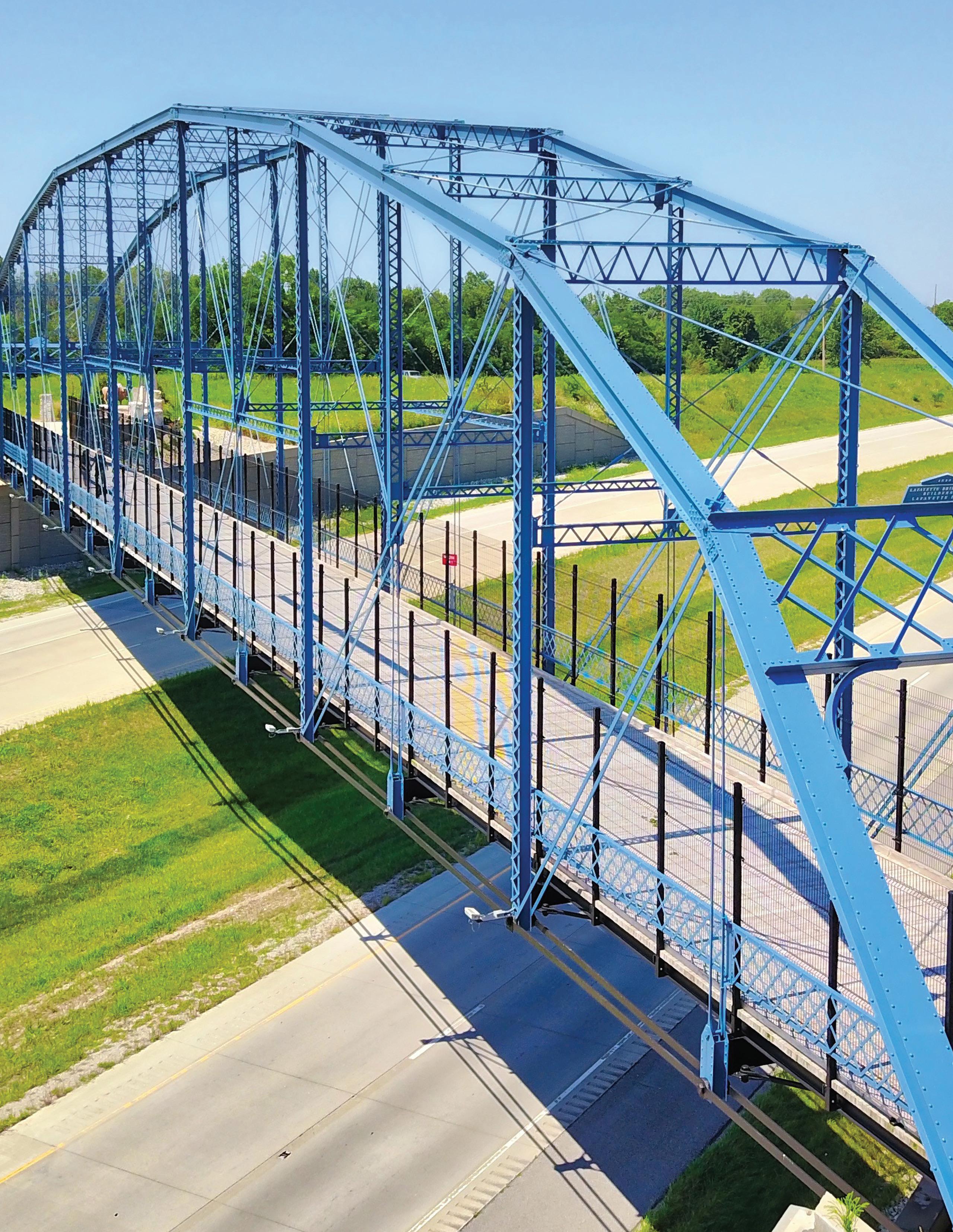




Business growth begins with lower tax rates. At 2.5%, North Carolina has the nation’s most competitive tax environment for businesses. Our state has a proven track record of reducing and streamlining business taxes. And starting in 2025, our tax rate will drop to 2.25% and decrease gradually until it ultimately reaches 0% in 2030. North Carolina’s business-friendliness is also showcased in the most recent Locations Matters study of corporate tax rates across all 50 states from the Tax Foundation and KPMG, which highlighted NC’s competitive tax structure across multiple industries..
Expansion is less expensive here. Building costs, 14 percent below the national average. Electricity costs, 22.6 percent below the national average. Cost of living, 11 percent below the national average in major metropolitan areas. Across many key indicators, we come in under budget. North Carolina’s business costs rank

among the lowest in the nation, making our state a more profitable place to work.
Across the state, their talented workforce is patenting new ways to work smarter. North Carolina businesses lead the nation in innovation with 96 percent patent growth over the past 10 years. With a commitment to long-term sustainability, North Carolina is a top state for solar and wind power production. Our ample resources, highly skilled workforce, and renowned education systems all contribute to our state’s future-minded ingenuity.
In North Carolina, legal roadblocks won’t hamper how you gain speed. Recent tort reform, streamlined practices and the strengthening of business courts in the state have earned North Carolina accolades and rankings among the best legal climates in the U.S. What does this mean for you? When there’s less red tape and litigation, your business can reach new heights, faster.
Leading the charge to a clean energy future. North Carolina is at the forefront of transitioning to a clean energy economy. Through legislation and bold action, the state has diversified its energy resource mix to include sustainable, low-cost energy sources.





















Piedmont Triad International Airport is without question the Center of North Carolina Aerospace.
“We are committed to promoting groundbreaking innovation in aerospace and to generating abundant, high-quality jobs for our community,” says Kevin Baker, PTI’s executive director. “Years ago, the Airport Authority envisioned the airport as a key catalyst for regional economic growth. It’s gratifying to see that this foresight is now yielding tangible benefits.”
The most visible evidence of PTI’s commitment to economic development may be seen as you travel Interstate 73, which bisects the airport, centrally located between Greensboro, High Point and Winston-Salem. There, you’ll see a 174,000 square foot hangar, where Boom Supersonic will soon be building a supersonic passenger jet with an affordable ticket price and a zero-carbon footprint. Boom broke ground in early 2023 on the manufacturing plant, which will include a final assembly line, a test facility, and a customer delivery center. Overture, the first production aircraft, is expected to debut later this decade. The company expects to employ 2,400 people at the plant. “Boom is just one example of this airport’s commitment to innovation,” Baker says. “The airport




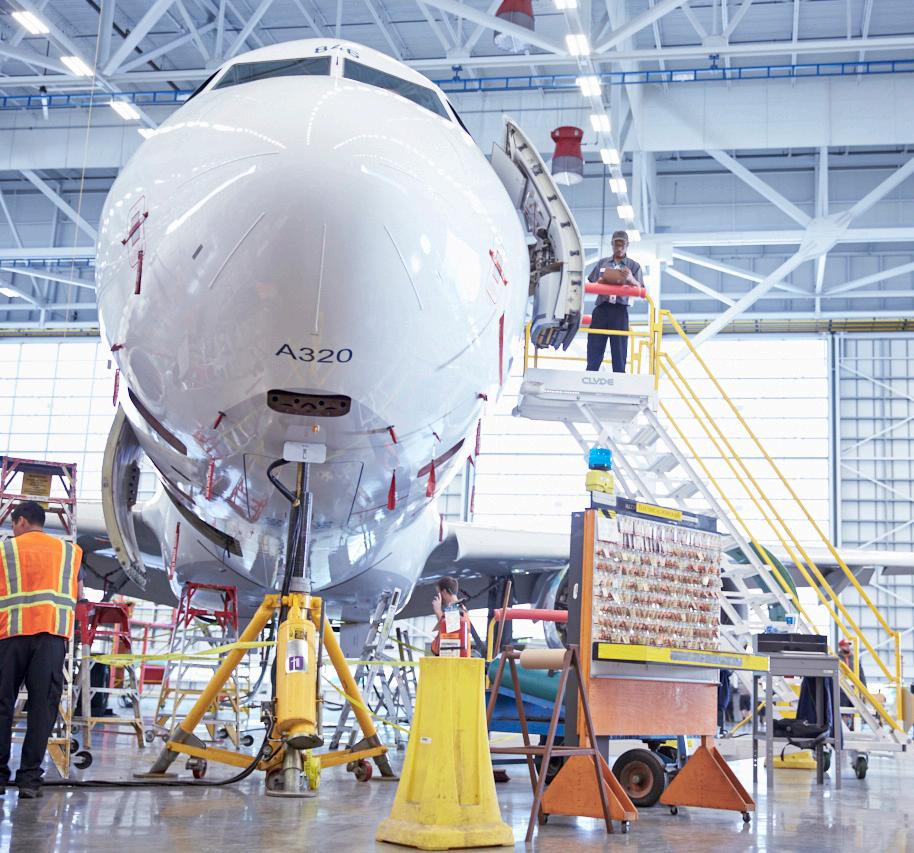
adopted an aggressive master plan a little over a decade ago to ensure that when the aerospace industry needs a site centrally located on the East Coast, proximate to multiple interstate highways and ready for development, we would have one available.”
Driving down I-73 you can see that Baker is not exaggerating. Thanks to the vision of present and past airport leadership, sites are being prepared alongside the Interstate for additional companies to locate at PTI. The airport has assembled a 1,000-acre, aerospace “mega-site” to accommodate a new wave of growth. Several of those parcels have been graded, have Interstate and runway access, and are ready for development.
Boom, Marshall Aerospace and Honda Aircraft Company are the most recent examples of companies that have found the airport an attractive place to locate and expand.
Altogether, about 50 companies are located on airport property, including global brands such as FedEx, Cessna/Textron and HAECO North America. Taken together, these 50 companies employ nearly 9,000 people at the airport. A supply-chain network of nearly
200 aerospace companies have located in the Piedmont Triad region near the airport providing even more aerospace jobs.
“It is very rewarding to see a long-term strategy materialize with these recent successes,” says Baker. “And we’re just getting started.” X
Alberta’s venture capital landscape is experiencing remarkable growth and transformation, driven by substantial investments, a thriving tech sector, and a commitment to innovation. Often known for our abundant natural resources and thriving energy sector, Alberta is charting a course towards economic diversification and sustainability across multiple sectors.
The province’s diverse and dynamic start-up ecosystem is making Alberta an attractive destination for venture capital investment. With leadership from Alberta Enterprise Corporation to build a thriving venture capital industry in Alberta, venture capital funds that have a track record of success, strong global networks, and a demonstrated commitment to the province of Alberta are already receiving support to enhance the innovation economy.
Venture capital and sustainability go hand-in-hand. Driven by a commitment to addressing the global challenge of climate change and reducing carbon emissions, Alberta is a hotbed for pioneering software solutions aimed at expediting sustainability efforts.
Amplify Capital, a Toronto-based investment fund that is providing early-stage companies long-term equity solutions and operational support, is deepening its roots in Alberta by hosting office hours on a quarterly basis. This engagement follows their investments in future fields and carbon upcycling technology, signaling their commitment to nurture and support local sustainability-focused start-ups in the region.
Alberta is a place where start-ups poised to be catalysts for change can freely contribute their innovative ideas and solutions. Venture capital firms, with their financial might and industry knowledge, are pivotal players. They are the lifeblood of start-ups and innovative projects, providing the funding needed to transform ideas into reality.
Where venture capitalists bring expertise and mentorship to the table, guide start-ups through the treacherous waters of entrepreneurship, and offer connections to potential customers and collaborators, Alberta offers an enticing blend of resource-rich opportunities in traditional and emerging industries. The provinces’ Western Canada location offers access to North American and global markets, a priority consideration for start-ups expanding internationally. Worldclass educational institutions also enhance the potential for cutting edge innovation.
For more information on all the opportunities in Alberta, please contact InvestAlberta at 1-877-733-5557, email info@investalberta. ca or visit their website at www.investalberta.ca .

Located on a major transportation corridor accessing global markets, Vegreville offers lower business costs for your investment. Their proximity to natural resources and easy access to major markets increases cost savings for those who do business here. Coupled with affordable housing, Vegreville continues to be an attractive place to live and call home.
Vegreville is an innovative fibre-connected community rich in culture and opportunities. With a population close to 6,000, the Town of Vegreville serves as a major service hub for northeast/east central Alberta that includes agriculture, energy, and retail. Their available selection of land and buildings can accommodate all sectors of commercial and industrial investment - connecting you regionally, nationally, and globally. Vegreville offers an excellent transportation/ logistics system, a skilled workforce, and is strategically located on a transportation corridor with vast agriculture and manufacturing assets. Vegreville has a strong retail base with a number of "anchor" retail stores, including Walmart, Canadian Tire, Mark's Work Wearhouse, Co-op, and No-Frills. These businesses draw customers from a trading area with a population of close to 30,000.
Located along Highway 16, the twinned TransCanada Yellowhead, Vegreville is an excellent choice to locate a commercial or retail business. As a major regional hub for the agricultural community, Vegreville serves the farming sector, with numerous implement dealers, bulk fuel stations, and input providers. Viterra and Grains Connect Canada have established Inland Grain Terminals next to Vegreville.
Vegreville is also well known as an innovative community as it is home to the world's leading agricultural research centre - InnoTech Alberta. Vegreville is ideally positioned as an agricultural-based manufacturing/processing centre as InnoTech Alberta provides research support for companies to perfect their product for the marketplace. InnoTech is a research and development facility that also features a 13,000 sq. ft. processing pilot plant concentrating on decorticating hemp and flax fibres. Within a 150km radius, Vegreville has access to close to 6,000,000 cultivated acres of feedstock which
include field peas, canola, wheat, oats, and barley. Alternative crops include hemp, fava beans, flax, and other pulse crops.
Vegreville has emerged as a global investment destination for industrial hemp seed, fibre and CBD, processing and manufacturing and has the proven “Northern Advantage” for growing hemp for fibre with long summer days and is well suited to grow industrial hemp varieties. The region’s high yields of fibre biomass are prized by the multitude of companies looking to convert these feedstocks into a wide range of products.
The Energy sector continues to be a strong foundation industry for Alberta that is built on years of experience, ample natural resources, and proven success to evolve with a changing economic landscape. Annual oil production from facilities located close to Vegreville has been consistent year over year, with total cumulative production over six years of close to 2 billion Barrel of Oil Equivalent (BOE).
Vegreville is uniquely positioned to explore opportunities in the Unmanned Vehicle Systems (UVS) sector. The region around Vegreville encompasses a large land space of over 43,000 sq. kilometers, with a substantial percentage covering boreal forest, parkland, and cultivated cropland. Investors can also benefit from the region’s strong research base, training programs, proven UVS applications, and the Canadian Forces Base (CFB) Cold Lake 4-Wing located within the region. Agriculture is one of Vegreville’s strongest assets and longstanding industries with access to almost 6 million acres of cultivated cropland (with 150 kilometers). There is a substantial market to offer aerial platforms that capture data and turn it into information that producers and field researchers can use to make critical farming decisions. The Vegreville Airport is drone-friendly which makes opportunities in UAV/BVLOS training and application in agriculture, energy, and others possible.
Located on the east side of Vegreville, Prosperity Industrial Park offers an excellent location for agriculture-based manufacturing. This includes hemp/flax fiber processing, plant protein, and food manufacturing. Priced at $50,000/acre, this is a fully serviced 72-acre site offering a variety of different lot sizes. Excellent access to Highway 16, a 4-lane east-west corridor, connects you to the Port of Vancouver and the Asian markets. Highway 36 the major
north-south corridor, 21 kilometers east of Vegreville connects you to U.S. and Mexican markets. In addition to the extreme value of $50,000/acre, in 2023, Vegreville Town Council unanimously passed a Machinery & Equipment Tax Bylaw.
The Machinery & Equipment Tax Exemption bylaw allows Vegreville businesses, both present and future, that are or would be, taxed on machinery and equipment by the municipality to apply for an automatic exemption of that tax, guaranteed for the next fifteen years.
Vegreville offers competitive commercial/industrial land prices, excellent transportation logistics systems, and a skilled workforce. Vegreville is strategically located on a transportation corridor with vast agriculture and manufacturing assets connecting to global markets.
Vegreville is located on the Trans-Canada Highway 16 (4-lane), connecting to the western ports and accessing Asian markets.
Both CN/CP railways operate major intermodal container terminals in Edmonton approximately 100km from Vegreville.
Highway 36, 22 kilometers east of
Vegreville, is a major north-south corridor that connects to the U.S. and Mexican markets.
Edmonton International Airport is just 1 hour away providing access to global air freight.
Major freight and courier companies provide daily service to Vegreville
Vegreville Regional Airport offers general aviation access and is UAV friendly.
Vegreville’s population is quite educated in hands-on technical fields, as well as roles in administration. Trades education makes up for 12.3% of Vegreville’s population, which is higher than the provincial average of 8.7%. Additionally, 46.9% of Vegreville’s population has a postsecondary certificate, diploma, or degree. With residents educated in many different industries and fields, businesses are sure to find employees trained in the exact occupation they are looking for.
For more information on the opportunities in the Town of Vegreville, please call 780-632-2606 or visit their website at www.vegreville.com or www.choosevegreville.com. X









A joint venture between Litecrete and Aercon, the company, Megaacrete, will invest $40 million in a 120,000-square-foot facility set to open in 2025
KERRVILLE, TX — A joint venture between Accelera by Cummins, the zero-emissions business unit of Cummins Inc., Daimler Trucks & Buses and PACCAR, is locating advanced battery cell production operations in Marshall County, Mississippi. The project represents a corporate investment of at least $1.9 billion and will create 2,000 jobs with an average annual salary of approximately $66,000.
The economic development project represents the largest payroll
TULSA, OK Stardust Power Inc., a development stage American manufacturer of battery-grade lithium products, announced that it has selected Southside Industrial Park in Muskogee, Oklahoma to build a new battery-grade lithium refinery, and is expected to be eligible to receive up to $257 million in state and federal economic incentives for the facility build-out. The Company may also be eligible for further federal grants and or incentives offered by the Department of Energy and the Department of Defense.
Stardust Power selected Muskogee, Oklahoma for its central refinery because of Oklahoma’s central U.S. location, facilitating delivery of lithium inputs and shipment of battery-grade lithium products over multiple transportation routes to support the Company’s refining operations. The area’s superior intermodal freight transport options as well as a highly skilled workforce trained in oil and gas engineering were other key factors. Additionally, Oklahoma is recognized as an emerging national leader in sustainable power, including solar and wind, supporting Stardust Power’s commitment to limit its carbon footprint.
“Stardust Power’s more than a billion-dollar investment is a testament to Oklahoma’s ‘all-of-the-above’ approach to energy, and our focus on
ATLANTA, GA — Governor Brian P. Kemp announced that Doowon Climate Control America, Inc., an auto parts manufacturer and supplier, will invest more than $30 million in a new manufacturing facility in Metter, creating 200 new jobs in Candler County. This marks the second automotive supplier announced in Candler County in less than six months.
“Georgia’s growth as a national leader in auto manufacturing continues to pay dividends for communities in all four corners of Georgia,” said Governor Brian Kemp. “In fiscal year 2023, alone, 82 percent of new jobs created and more than $20 billion of investments went to communities outside the metro Atlanta area. The City of Metter and Candler County are key beneficiaries of that success, and we are excited for Doowon Climate Control America, Inc. to join this community.”
Established in Korea in 1974, Doowon Group specializes in designing and manufacturing automotive climate control systems. The company will be a key supplier for Kia Motors Manufacturing Georgia (Kia Georgia) and Hyundai Motor Group.
commitment of any major project in Mississippi history. Additionally, at $1.9 billion, this is the second largest economic development project in state history.
Accelera, Daimler Truck and PACCAR each own 30% of, and jointly control, the joint venture. EVE Energy will serve as the technology partner in the joint venture with 10% ownership. The joint venture aims to accelerate and localize battery cell production and the battery supply chain in the U.S. The company will manufacture battery cells for electric commercial vehicles and industrial applications, creating quality manufacturing jobs in the growing clean technology sector.
The to-be-named joint venture’s 21-gigawatt facility will be located on a portion of the Chickasaw Trails Industrial Park Megasite near Byhalia.
Mississippi Major Economic Impact Authority funds will be used to assist with infrastructure needs, site preparation and tax credits.
workforce development,” said Oklahoma Governor Kevin Stitt. “As we see more energy manufacturers moving to our state, due in part to our competitive, performance-based incentives, Stardust Power’s new lithium refinery will create hundreds of new jobs while cementing Oklahoma’s place as the best state in the nation for critical mineral manufacturing. I’m proud to welcome Stardust Power to Oklahoma, and I applaud their commitment to American energy dominance.”
“We welcome Stardust Power to Muskogee and are proud that our city and Port will be at the forefront of powering the future of America’s automotive industry,” said Kimbra Scott, Executive Director of Port Muskogee. “The decision to establish a state-of-the-art lithium refinery reinforces Port Muskogee’s unmatched advantages and our commitment to supporting emerging industries. We look forward to a longstanding partnership as Stardust Power plants its roots in Northeastern Oklahoma.”
“We would like to thank Governor Stitt and officials at the Oklahoma Department of Commerce, Tulsa Chamber, City and Port of Muskogee for their strong support,” said Roshan Pujari, Founder and CEO of Stardust Power. “Oklahoma offers many advantages for private employers, including a strong, well-trained workforce and an eye on the future of energy production and mobility.”
The Company currently expects to break ground in the first half of 2024.
“Doowon Climate Control America, Inc. is making significant investments to establish itself as Doowon Group’s inaugural automotive air conditioning system production facility in the United States,” said Ki Chun Sung, CEO of Doowon Climate Control America, Inc. “The company is optimistic that its technological expertise and industry experience will play a vital role in the growth of the local community. Our sincere appreciation extends to the State of Georgia and Candler County for their steadfast support throughout the process, and we look forward to ongoing support and collaboration.”
Doowon Climate Control America, Inc.’s new manufacturing facility will be located in the Metter-Candler County I-16 Industrial Park, a “Georgia Ready for Accelerated Development” (GRAD) certified site. The facility will primarily produce climate control systems for use in traditional and electric vehicles. Operations are projected to begin in 2026.
Doowon Climate Control America, Inc. plans to hire employees in various fields such as injection molding technicians; assembly operators; quality, materials, and production specialists; engineers; and management. Job opportunities will be posted in local newspapers and on recruitment websites as they become available.
HARRISBURG, PA — Excelitas Technologies Corp., a leader in photonics technology, has chosen Pennsylvania as the new home, a $2.3 million investment, creating at least 250 jobs in Pittsburgh over the next four years.
Currently located in Waltham, Massachusetts, Excelitas has committed to a 12-year lease for up to 50,000-square-feet of space in Pittsburgh’s Strip District neighborhood. Pittsburgh’s Strip District has transformed from its historical roots as a center of manufacturing and warehousing into an epicenter of innovation centered around tech and innovation, which includes robotics/autonomy. Pittsburgh is home to nearly 1,800 technology firms, including 100+ robotics companies.
“For the past year, I’ve been telling the world that Pennsylvania is open for business ― and Excelitas clearly agrees,” said Pennsylvania Governor Josh Shapiro. “Excelitas is a leading player in a growing field, and its presence in Pittsburgh will not only create jobs and real opportunity for Pennsylvanians but also send a clear signal that Western Pennsylvania is a national hub for life sciences, advanced manufacturing, and more.”
Since January 2023, Governor Shapiro has announced more than $1.2 billion in new private-sector investment in Pennsylvania as a direct result of his Administration’s work.
ROCKY MOUNT, NC —Global power technology leader Cummins Inc. (NYSE: CMI) announced a $580 million project to drive economic and job growth in the Nash County community. Cummins has received approval for tax incentives to help move the project forward and the incentives received from the Nash County Commissioners office will support the continued investment within the area.
This strategic investment is set to generate approximately 80 additional new jobs, fostering both short-term employment opportunities and long-term job stability. As Cummins continues towards its Destination Zero Strategy and its plan to achieve zero emissions across its products, the investment will involve installing new equipment for the future of manufacturing and upgrading the assembly line for next generation products. This investment is part of Cummins recent investment of more than $1 billion across its U.S. manufacturing network.
“We are excited to be driving continued growth within Nash County and creating jobs that rely on high caliber technology for the future,” said Steve Pinkston, Cummins Rocky Mount Engine Plant Manager. “Cummins is focused on Destination Zero and getting there as quickly as possible. We need engagement from federal, state, and local governments like Nash County to achieve our goals and we are grateful for their support. When we receive engagement from local partners like this, it helps us move faster toward a more sustainable future.”
With a rich history of production for more than 40 years and producing over 5 million engines at RMEP, this milestone investment reaffirms Cummins’ dedication to the region’s economic vitality and sustaining its impactful presence for the foreseeable future. Currently, there are 2,000 employees contributing to the success and growth of Cummins at the RMEP facility.
Decarbonization is a growth opportunity for Cummins and the fuel-agnostic engine platform is a key component to help customers decarbonize today and make it easier to adopt alternative fuel types. These products are instrumental in supporting fleets on their journey toward Destination Zero by providing products that are economically
“The Pittsburgh region has developed a significant high-technology presence, combined with a strong work ethic and an engaged state and local leadership who understand the value of job creation,” said Ron Keating, Excelitas Technologies CEO. “These factors provided attractive competitive differentiators when we undertook our site selection process. We would like to thank Governor Shapiro and his Administration for their strong and compelling support.”
Excelitas is a photonics technology leader focused on delivering innovative, high-performance, market-driven solutions to meet the technology needs of its expansive customer base serving the life sciences, microelectronics, automation, aerospace and defense end markets. locations in North America, Europe, and Asia to serve customers worldwide.
“Excelitas will advance customized photonics solutions for global markets from their new home in the Strip District, one of our region’s most well-known and vibrant centers of tech and innovation,” said Allegheny Conference on Community Development CEO Stefani Pashman. “In addition to recognizing Governor Shapiro for his bullish approach to creating an investment-winning environment in Pennsylvania, I want to thank Excelitas CEO Ron Keating for casting his vote for Pittsburgh – first with Evoqua and now with Excelitas – as a region with everything to support not only launching but growing, innovative companies.
viable, scalable and deliver the power, performance and durability with the evolving needs of customers.
Cummins is committed to improving the communities in which it operates to have a direct impact on the lives of its employees and the broader community. Over the past two years, RMEP employees have collectively devoted more than 20,000 hours to community engagement, forging meaningful alliances with educational institutions in surrounding districts. These partnerships extend to community colleges, public school systems, libraries, and various community organizations. RMEP takes pride in its collaboration with community partners, including the Boys & Girls Club of the Tar River Region, United Way Tar River Region, Strategic Twin-Counties Education Partnership (STEP), Down East Partnership for Children, Carolina Gateway Partnership, and the Rocky Mount Chamber of Commerce.
“This investment is not just about engines; it’s a testament to our unwavering commitment to the community and our vision for a sustainable and impactful future,” said Pinkston. “It means RMEP and Cummins are here to stay and we take pride in being the one of the largest employers in the tri-county area. Our role extends beyond the production floor; it’s about cultivating a thriving community where everyone can succeed. As we invest in innovation and growth, we’re also investing in the community that has been our home for four decades and counting.
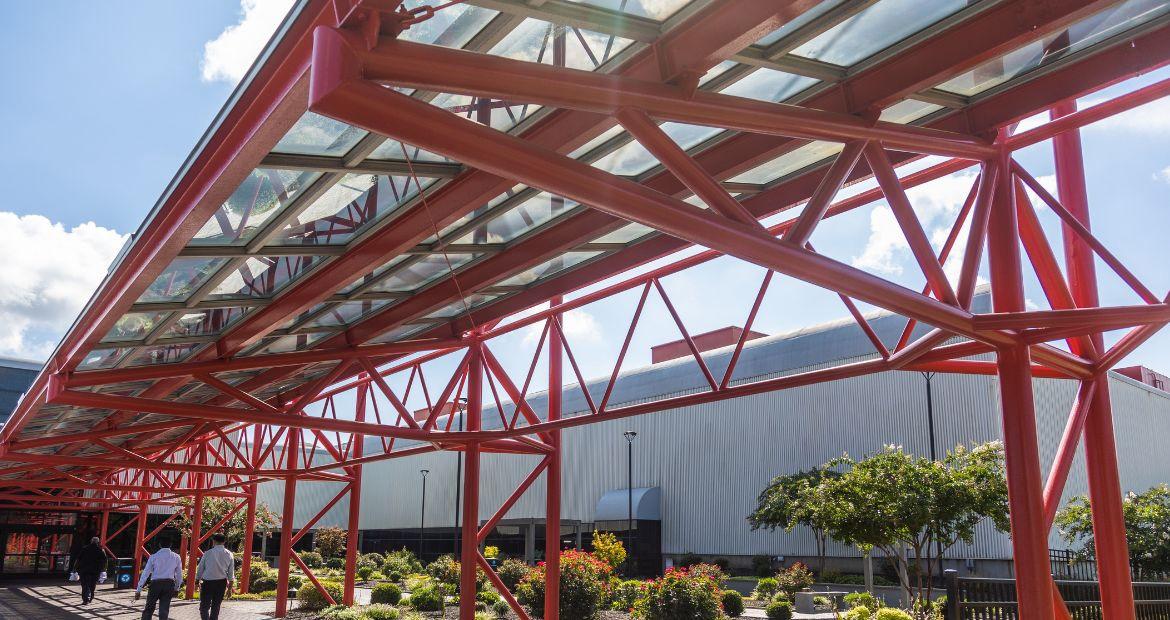
JEFFERSONVILLE, IN — Governor Eric J. Holcomb joined executives of Meta Platforms Inc. (NASDAQ: META) as the company announced plans to establish a new $800 million data center campus in Indiana. The new facility in Jeffersonville will support approximately 100 operational jobs and hundreds of construction jobs in the coming years.
Meta, which powers products like Facebook, Messenger, Instagram and WhatsApp, will establish a nearly 700,000-square-foot facility at the River Ridge Commerce Center in Jeffersonville. The facility, which will be the company’s 18th in the U.S. and 22nd in the world, will be an important part of the global infrastructure that brings Meta technologies and services to billions of people around the world. Meta is starting construction this month and expects the data center to be operational in 2026. In addition to the 100 operational jobs, the company also expects to support more than 1,250 jobs at peak construction.
“We are thrilled to make Indiana and Jeffersonville our new home. We are committed to playing a positive role here and investing in the community’s long-term vitality,” said Brad Davis, director of data center community and economic development at Meta. “Jeffersonville stood out as an outstanding location for our newest data center thanks to its great access to infrastructure, deep pool of talent, and amazing community partners. Thank you to everyone who has helped us get here.”
Like all of Meta’s data centers, the Jeffersonville Data Center will be supported by 100% renewable energy, and the campus will achieve
COLORADO SPRINGS, CO —Governor Polis and the Global Business Development Division of the Colorado Office of Economic Development and International Trade (OEDIT) will join Microchip, a leading producer of semiconductor devices, and the U.S. Department of Commerce, announced a historic preliminary memorandum of terms (PMT) resulting in $90 million to modernize and expand a Microchip fabrication facility in Colorado Springs as part of $162 million in overall direct funding to support the company’s semiconductor supply chain.
Microchip, which employs nearly 1,000 Colorado workers, is the second semiconductor company to be identified for federal funding through the CHIPS and Science Act and the first in Colorado. This is the largest federal investment in CHIPS manufacturing announced by the Department of Commerce to date.
“Colorado is a leader in the semiconductor industry and we are proud to have companies like Microchip expanding in our state and creating more good-paying jobs for Coloradans,” said Governor Jared Polis. “I applaud the federal government’s commitment to investing in this cutting-edge industry and appreciate this partnership as Colorado’s semiconductor industry continues to grow.”
A U.S.-headquartered, public multinational company, Microchip’s product portfolio supports over 125,000 customers across the
LEED Gold certification once operational. Updates on the Jeffersonville Data Center can be found here.
“On behalf of the residents of Jeffersonville, I am ecstatic to officially welcome Meta to our community,” said Jeffersonville Mayor Mike Moore. “River Ridge has been saving this 619-acre site for a mega company, and Meta’s investment and commitment to our community are proof that this strategy is paying off. The economic activity around this new data center will support every sector of our economy, and we appreciate all those who have worked to bring Meta to Jeffersonville.”
Indiana is an ideal hub for technology companies thanks to its business-friendly environment, abundance of infrastructure resources, availability of skilled labor, and growing technology and semiconductor sectors. In 2023, the state welcomed more than $28.7 billion in planned capital investment from businesses committing to locate or grow in Indiana. Together, these businesses expect to create 21,866 new jobs with average wages higher than both the state and national averages.
Based on the company’s investment plans, the Indiana Economic Development Corporation committed an investment in Meta in the form of a 35-year term data center sales tax exemption for a minimum $800 million in eligible capital. For each additional $800 million of eligible investment made at the site within that time period, the company will be eligible for tax exemptions for an additional 5-year period, up to a total term of 50 years. These incentives are performance-based, meaning the company is eligible to claim state benefits once investments are made. The city of Jeffersonville and the River Ridge Development Authority offered additional incentives. Duke Energy was an important partner in enabling this investment.
industrial, automotive, consumer, aerospace and defense, communications and computing markets. This investment would enable Microchip to significantly increase its U.S. production of microcontroller units (MCUs) and other mature-node semiconductors critical to America’s defense, aerospace, auto, commercial, and industrial industries. Together with an expansion at a Microchip fabrication facility in Gresham, Oregon, the Colorado Springs expansion is estimated to nearly triple the share of semiconductors the company produces at these sites.
“Microchip has made significant investments in our 50-acre, 580,000-square-foot Fab 5 Colorado Springs campus. The $90 million grant from the CHIPS and Science Act further supports our $940 million modernization and expansion, and is expected to assist in more than tripling the chip output from this facility,” said Ganesh Moorthy, president and CEO of Microchip Technology. “We also anticipate the expansion will create 400 additional jobs in the region. Our collaboration with local and state officials, the Colorado Springs Chamber of Commerce and Colorado Office of Economic Development and International Trade (OEDIT) has been instrumental in getting our proposal across the finish line.”
In Colorado Springs, Microchip will expand several product lines to three to seven times their current capacity. Microchip expects the expansion to create 400 net new jobs at an average annual wage of $75,000, which is 118% of the average annual wage in El Paso County.
Truck battery joint venture locating $1.9 billion factory in Marshall County, Mississippi, creating 2,000 quality jobs
Project represents the largest payroll commitment of any major project in state history
JACKSON, MS — A joint venture between Accelera by Cummins, the zero-emissions business unit of Cummins Inc., Daimler Trucks & Buses and PACCAR, is locating advanced battery cell production operations in Marshall County, Mississippi. The project represents a corporate investment of at least $1.9 billion and will create 2,000 jobs with an average annual salary of approximately $66,000.
The economic development project represents the largest payroll commitment of any major project in Mississippi history. Additionally, at
$46 Million Plan to Build First U.S. Facility in Louisiana
RESERVE, LA — Life for Tyres Group Limited, Europe’s largest end-of-life tire recycling company with the manufacturing facilities for sustainable commodities, announced it will invest $46 million to establish its first U.S. processing facility on 10 acres at the Port of South Louisiana.
The recycling and manufacturing plant, L4T Louisiana LLC, will convert end-of-life tires into high-quality sustainable commodities such as advanced biofuel feedstock, recovered carbon black and scrap steel. L4T expects to create 46 direct new jobs in St. John the Baptist Parish. Louisiana Economic Development estimates the project will result in 151 indirect new jobs, for a total of 197 potential new jobs in the Southeast Region.
“This new project is a perfect example of the power of the ports to drive investment and job creation in Louisiana,” Governor Jeff Landry said. “In addition to the tremendous impact this foreign investment will have on the state and local economies, L4T will support Louisiana-based oil and gas and petroleum chemical companies with high-quality sustainable commodities that help them achieve their carbon management goals.”
Life for Tyres Group’s patented technology enables it to manufacture high-quality secondary raw materials such as recovered carbon black, green oil and steel, which are then used in industrial processes. The company says its approach reduces up to 90% of greenhouse gas emissions when compared with conventional tire recycling processes.
“We are very excited about expanding our operations in the U.S. in the state of Louisiana and being part of its energy transition,” L4T CEO Tilen Milicevic said. “A strong industrial ecosystem, the availability of qualified personnel and suppliers, excellent connectivity, abundance of feedstock and proximity of our final clients are just a few of the many reasons why L4T Group, following a thorough market study, decided for Louisiana to be home to our first investment in the U.S. We are looking forward to a long and fruitful partnership with the Port of South Louisiana and to being good corporate
$1.9 billion, this is the second largest economic development project in state history.
Accelera, Daimler Truck and PACCAR each own 30% of, and jointly control, the joint venture. EVE Energy will serve as the technology partner in the joint venture with 10% ownership. The joint venture aims to accelerate and localize battery cell production and the battery supply chain in the U.S. The company will manufacture battery cells for electric commercial vehicles and industrial applications, creating quality manufacturing jobs in the growing clean technology sector.
The to-be-named joint venture’s 21-gigawatt facility will be located on a portion of the Chickasaw Trails Industrial Park Megasite near Byhalia.
Mississippi Major Economic Impact Authority funds will be used to assist with infrastructure needs, site preparation and tax credits.
citizens for the state of Louisiana.”
L4T’s Louisiana facility is part of a broader global expansion plan by the company, which is headquartered in Ireland and recently opened a plant in Puertollano, Spain.
“At the Port of South Louisiana, we have made environmental sustainability a pillar in our mission as we seek private investments that not only create jobs for River Region families, but are also safe for our community,” Port of South Louisiana CEO Paul Matthews said. “The first of its kind in the nation, L4T Louisiana will be a world-class, carbon positive facility where Louisiana’s workers will produce high-quality totally sustainable commodities. This project will be a welcome addition to Globalplex, making it a greener and more efficient facility with room to grow.”
To secure the project, the state of Louisiana offered a competitive incentives package that includes the comprehensive workforce development solutions of LED FastStart. It also includes a Performance-Based Grant of $1 million to be used for reimbursement of company expenditures for site improvements. The company is also expected to participate in Louisiana’s Industrial Tax Exemption and Quality Jobs programs.he community that has been our home for four decades and counting.


Cullman Economic Development Agency
Dale Greer
P.O. Box 1009
Cullman, AL 35056
256-739-1891
daleg@cullmaneda.org
www.cullmaneda.org
Gadsden-Etowah Industrial Development Authority
David Hooks
Executive Director
1 Commerce Square Gadsden, AL 35901 256-543-9423
davidhooks@gadsdenida.org
www.gadsdenida.org

Elmore County Economic Development
Cary Cox
P.O. Box 117
Wetumka , AL 36092
334-514-5843
cary.cox@elmoreeda.com
www.elmoreeda.com
Northwest Alabama EDA
Tom Wisemiller
4020 U.S. Highway 43
Guin, AL 35563
205-468-3213
twisemiller@northwestalabameda.org
www.northwestalabamaeda.org

Tuscaloosa County Economic Development Authority
Justice Smyth
Executive Director
P.O. Box 2667
Tuscaloosa, AL 35403
205-349-1414
info@tcoeda.com
www.tcoeda.com
ARIZONA


Arizona Regional Economic Develoment
Mignonne Hollis, Executive Director 750 E. Bartow Drive Suite 16
Sierra Vista, AZ 85635 520-458-6948
hollism@aredf.org www.aredf.org
City of Flagstaff Economic Development
John Saltonstall, AZED Pro Business Retention & Expansion Manager
Economic Vitality Division
City of Flagstaff 211 W. Aspen Avenue Flagstaff, AZ 86001 Office 928-213-2966
Cell 928-606-9430
jsaltonstall@flagstaffaz.gov www.flagstaffaz.gov
Pinal Alliance for Economic Growth
Patti King, Executive Mgr. 17235 N. 75th Avenue Suite D-145 Glendale, AZ 85308 520-836-8686
pking@pinalalliance.org www.pinalalliance.org


Ouachita Partnership for Economic Development
James Lee Sillman
Executive Director
625 Adams Aveune Camden, AR 71701
870-836-2210
870-836-8899 (f) director@teamcamden.com www.teamcamden.com
Clarksville Economic Development
Steve Houserman
205 Walnut Street, Clarksville, AR 72830
479-754-6486
shouserman@clarksvillear.gov www.clarksvillear.gov

East Arkansas Crossroads Coalition
Alicia Woolman
1790 N. Falls Boulevard, Suite 2 Wynne, AR 72396
870-238-5300
crossroads@crossroadscoalition.org
www.crossroadscoalition.org

Salt River Project (SRP)
Karla Moran
P.O. Box 52025
Phoenix, AZ 85072-2025 602-236-2396
Karla.moran@srpnet.com www.powertogrowphx.com

City of Surprise
Mike Hoover
16000 N Civic Center Plaza Surprise, AZ 85374
623-222-3328
Mike.hoover@surpriseaz.gov www.surpriseaz.gov
Mississippi County Economic Development
Clif Chitwood
4701 Memorial Drive
Blytheville, AR 72315 870-532-6084
clif@cottontosteel.com
www.cottontosteel.com

City of Siloam Springs
Kristifier Paxton
Community Development Director
P.O. Box 80
Siloam Springs , AR 72761
479-238-0930
kpaxton@siloamsprings.com whysiloam.com


City of Eastvale
Gina Gibson-Williams Economic Development Manager
12363 Limonite Ave. Suite 910
Eastvale, CA 91752
951-703-4425
ggibson-williams@eastvaleca.gov
www.eastvaleca.gov
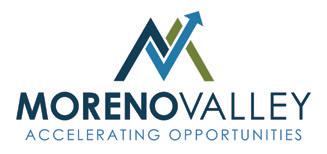
City of Moreno Valley Economic Development
Mike Lee
Economic Development Director
14177 Frederick Street
Moreno Valley, CA 92553
951-413-3460
mike@moval.org
www.morenovalleybusiness.com
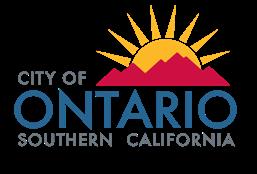
City of Ontario Economic Development
Jennifer McLain Hiramoto Economic Development Director
303 East B Street Ontario, CA 91764
909-395-2295
JHiramoto@ontarioca.gov
www.ontariothinksbusiness.com

Greater Irvine Chamber
Pepper Russell
36 Executive Park Suite 100 Irvine, CA 92614
949-502-4129
prussell@irvinechamber.com
www.irvinechamber.com


City of Canon City
Rick Harrmann
128 Main Street
Canon City, CO 81212
719-276-5279
rlharrmann@canoncity.org
www.canoncity.org

City of Fountain Economic Development Commission
Kimberly A. Bailey
Economic Development/ Urban Renewal Director
116 S. Main Street
Fountain, CO 80817
719-322-2056
kbailey@fountaincolorado.org
www.fountaincolorado.org


Enterprise Florida, Inc.
800 North Magnolia Avenue
Suite 1100
Orlando, FL 32803
407-956-5600
www.enterpriseflorida.com

City of Titusville
Nicholas Gow
555 South Washington Avenue

Holmes County Development Commission
Joe Rone, Executive Director
106 E Byrd Avenue Bonifay, FL 32425
850-547-6154
jrone@westflorida.coop hcdc1978@gmail.com www.holmesedc.com

Indian River Chamber of Commerce

Pinellas County Economic Development
Dr. Cynthia Johnson, EDFP Director 13805 58th Street North, Suite 1-200 Clearwater, FL 33760 727-464-7332
cyjohnson@pinellascounty.org
www.pced.org
Grand Junction Economic Partnership
Robin Brown, Executive Director
122 N. 6th Street
Grand Junction, CO 81501 970--245-4332
robin@gjep.org
www.gjep.org


Town of Berlin
Chris Edge
Director
240 Kensington Road
Berlin, CT 06037 860-828-7005
cedge@town.berlin.ct.us
www.town.berlin.ct.us


Kent Economic Partnership
Linda Parkowski
Executive Director
555 Bay Road
Dover, DE 19901
302-678-3057
info@ccede.com
www.choosecentraldelaware.com

Wilmington Economic Development
Sean J. Park
800 N. French St., 3rd Floor
Wilmington, DE 19801
302-576-2128
sjpark@wilmingtonde.gov
www.wilmingtonde.gov
Titusville, FL 32796-3584
321-567-3774
economicdevelopment@titusville.com
www.YEStitusvilleFL.com

Greater St. Petersburg Area Economic Development Corporation
J.P. DuBuque
President and CEO
100 2nd Ave N Ste 130
St. Petersburg, FL 33701
727-388-2906
jpdubuque@stpeteedc.com
StPeteEDC.com/BurgBiz
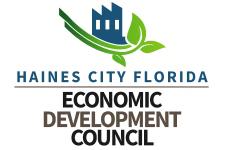
Haines City Economic Development Council, Inc.
Cyndi Jantomaso, MEDP President/CEO
Post Office Box 3845
Haines City, FL 33845-3845
863-422-2525
cyndi@hainescityedc.com
www.hainescityedc.com

Hernando County Office of Economic Development
Valerie M. Pianta, MEDP, Economic Development Director
15800 Flight Path Drive
Brooksville, FL 34604
352--540-6400
vpianta@hernandocounty.us
www.hernandobusiness.com
Helene Caseltine Economic Development Director 1216 21st Street Vero Beach, FL 32960 772-567-3491
helenec@indianrivered.com www.indianrivered.com
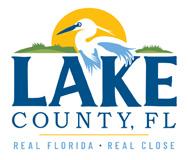
Lake County, Economic Development
Kathleen Dial, Director 315 W. Main Street Tavares, FL 32778 352-742-3925
Kathleen.dial@lakecountyfl.gov www.lakecountyfl.gov

Osceola County David Rodriguez, Economic Development Manager 1 Courthouse Square, Suite 4400 Kissimmee, FL 34741 407-742-0620
407-742-4202 (f)
david.rodriguez@osceola.org www.chooseosceola.com www.osceola.org

Pasco Economic Development Council
Bill Cronin, President & CEO 16506 Pointe Village Drive, Suite 101 Lutz, FL 33558
813-926-0827
813-926-0829 (f)
bcronin@pascoedc.com pascoedc.com
Santa Rosa County EDO
Shannon Ogletree, , Executive Director 6491 Caroline Street, Suite 4 Milton, FL 32570-4592 850-623-0174
Shannon@sant arosa.fl.gov
www.santarosaedo.com

City of St. Cloud
Antranette Forbes, Economic Development Direcrector 1300 9th Street St. Cloud, FL 34769 (407)957-7234
antranette.forbes@stcloud.org
www.stcloud.org

Tallahassee-Leon County Office of Economic Vitality
Keith Bowers, Director 315 S. Calhoun Street, Suite 110 Tallahassee, FL 32301 850-219-1080
kbowers@oevforbusiness.org
www.oevforbusiness.org

City of College Park
Artie Jones III

Director of Economic Development 3667 Main Street
College Park, GA 30337
404-305-2052
404-305-2057 (f)
artiejones@collegeparkga.com
www.collegeparkga.com/

City of East Point
Maceo Rogers CEcD
2757 East Point Street
East Point, GA 30344
404-270-7057
jmrogers@eastpointcity.org
www.eastpointcity.org

Forward Forsyth
Slade Gulledge
P.O. Box 1799
Cumming GA 30028
770-887-6461
770-842-1170
sgulledge@forwardforsyth.org
www.forwardforsyth.org

Liberty County Development Authority
Ronald Tolley, CEO
425 W. Oglethorpe Highway
Hinesville, GA 31313
912-977-4147
Ron.tolley@comegrow.global
www.comegrow.global

Putnam Development Authority
Matt Poyner
Econmical Devleopment Director
117 Putnam Drive, Eaton, GA 31024 706-816-8099
mpoyner@putnamforward.dev www.putnamforward.dev

City of Highland Economic Development
Mallord Hubbard
1115 Broadway, P.O. Box 218
Highland, IL 62249-0218
618-654-9891
618-654-4768 (f)
mhubbard@highlandil.gov
www.highlandil.gov

City of Litchfield Ecnomic Development
Austin Edmondson
120 E. Ryder Street
Litchfield, IL 62056
217-324-8151
cityadm@cityoflitchfieldil.com
www.litchfieldil-development.com
.......................................................................

Village of Arlington Heights Business & Economic Development
Charles Witherington-Perkins Director of Planning & Community Development
33 S. Arlington Heights
Arlington Heights, IL 60005 847-368-5220
cperkins@vah.com
www.vah.com
Adams County EDC
Colton Bickel

313 W. Jefferson Street, Suite 237 Decatur, IN 46733
260-724-2588
cbickel@adamscountyedc.com www.adamscountyedc.com
Carroll County EDC
City of Marshall
Nora Swalls
Economic Development Director
201 S. Michigan Ave
Marshall, IL 62441
217-826-2034
nswalls@marshall-il.com
www.marshall-il.com

City of Vandalia
Valdosta-Lowndes County Development Authority
Andrea Schruijer, Executive Director P.O. Box 5185
Valdosta, GA 31603-1963
229-259-9972
aschruijer@buildlowndes.com www.buildlowndes.com


Champaign County Economic Development Corporation
Carly McCrory-McKay, Executive Director
1817 S. Neil Street, Suite 100
Champaign, IL 61820
217-359-6261
carly@champaigncountyedc.org
www.champaigncountyedc.org
Latisha Paslay
431 W. Gallatin St. Vandalia, IL 62471
618-283-1152
618-335-9510 (Mobile)
vandaliaed@vandaliaillinois.com
www.vandaliaillinois.com

Intersect Illinois
Dan Seals, CEO
Senior Vice President Business Development
230 W. Monroe St.
Chicago, IL 60606
312-667-6013
dan.seals@intersectillinois.org
www.intersectillinois.org
Jake Adams, Exec Director
P.O. Box 83 Delphi, IN 46923
765-564-2060
jadams@carrollcountyedc.com
www.carrollcountyedc.com

Miami County Economic Development Auth.
Jim Tidd
1525 W. Hoosier Boulevard Peru, IN 46970
765-689-0159
jtidd@miamicountyeda.com www.miamicountyeda.com


Dodge City/Ford County Development Corporation
Joann Knight, Executive Director 101 E. Wyatt Earp Blvd. Dodge City, KS 67801
620-227-9501
620-227-2957 (f)
jknight@dodgedev.org www.dodgedev.org
Go Topeka
Molly Howey, CEcD President
719 S Kansas Ave. Suite 100 Topeka, KS 66603
785.231.4707
mhowey@gotopeka.com www.gotopeka.com

Russell County Eco Devo & CVB Mike Parsons, Director 331 E. Witchita, Russell, KS 67665 785-483-4000
rced2@russellks.net
www.russellcountyks.org

Salina Economic Development Organization
D. Mitch Robinson, CEcD 120 West Ash Street Salina, KS 67401
785-404-3131
mrobinson@salinaedo.org
www.salinaedo.org

Shawnee Economic Development
Ann Smith-Tate, President CEO 15100 W. 67th Street Suite 202 Shawnee, KS 66217-9344 913-631-6545
asmithtate@shawneekschamber.com www.shawnee-edc.com

Wyandotte Economic Development Council
Greg Kindle President
727 Minnesota Avenue Kansas City, KS 66101 913-371-3198
gkindle@wyedc.org
www.wyedc.org
KENTUCKY


City of Pikeville
Jill Fraley Dotson
Executive Economic Development Director
773 Hambley Boulevard Pikeville, KY 41501
606-437-5128
info@whypikeville.com www.whypikeville.com
Be NKY
Kimberly Rossetti
VP of Economic Development
300 Buttermilk Pike, Suite 332 Ft. Mitchell, KY 41017 888-874-3365
krossetti@Be-NKY.com
www.Be-NKY.com

South Western Kentucky EDC
Carter Hendricks Executive Director
2800 Fort Campbell Blvd. Hopkinsville, KY 42240 270-885-1499
chendricks@southwesternky.com www.southwesternky.com
Louisiana Economic Development
Anya G. Hudnall
1201 N. Third Street
Suite 7-210
Baton Rouge, LA 70802 225-342-5396
Anya.hudnal@la.gov
www.la.gov



St. Mary Parish of Economic Development
Evan Boudreaux Director
500 Main Street, 5th Floor Courthouse Franklin, LA 70538 337-828-4100
ecodev@stmaryparishla.gov
www.stmaryparishdevelopmant.com
MAINE


Town of Richmond Community, Economic, & Business Development
Darryl Sterling, Director 26 Gardiner Street Richmond, ME 04357-0159 207-737-4305 x 331 207-737-4306 (f)
director@richmondmaine.com
www.richmondmaine.com


Calvert County Economic Development
Julie Oberg, Director 205 Main Street
Prince Frederick, MD 20678 410-535-4583
julie.oberg@calvertcountymd.gov www.choosecalvert.com

Carroll County Economic Development
Paige Sunderland, Director 225 N. Center Street, Ste. 101 Westminster, MD 21157
410-386-2070
psunderland@carrollbiz.org
www.carrollbiz.org
SWLA Economic Development ALLIANCE
George Swift
4310 Ryan Street
Lake Charles LA 70605
337-433-3632
gswift@allianceswla.org
www.allianceswla.org

Cecil County Economic Development
Bill Sorenson, Director
200 Chesapeake Blvd., Ste 2700 Elkton, MD 21921 410-996-8465
wsorenson@cecilcountymd.gov www.cecilbusiness.org

Dorchester County Economic Development
Susan Banks, Director 104 Tech Park Drive Cambridge, MD 21613 410-228-0155
sbanks@choosedorchester.org
www.choosedorchester.org

Kent County Department of Economic & Tourism Development
Jamie L. Williams, CEcD, Director 400 High Street, 3rd Floor Chestertown MD 21620 410-810-2168
jlwilliams@kentgov.org
www.kentcounty.com/business

Montgomery County Economic Development
Laurie Babb 1801 Rockville Pike, Ste. 320 Rockville, MD 20852 240-641-6704
laurie@thinkmoco.com
www.thinkmoco.com

Talbot County Economic Development
Cassandra M. Vanhooser, Director 11 S. Harrison Street Easton, MD 21601 410-770-8000
Cvanhooser@talbgov.org www.talbgov.org

Michigan Economic Development Corporation
300 N. Washington Sq. Lansing, Michigan 48913 888-522-0103
www.michiganbusiness.org

Economic Development Alliance (EDA) of St. Clair County
Dan Casey, CEO 100 McMorran Boulevard 4th Floor, Suite B Port Huron, Michigan 48060 810-982.9511
www.edascc.com
stclairhotjobs.com

The Right Place, Inc
Andria Romkema
125 Ottawa Avenue, Suite 450 Grand Rapids, MI 49503 616-771-0563
romkemaa@rightplace.org
www.Rightplace.org


City of Lakeville Community & Economic Development
David Olson, Director
20195 Holyoke Avenue
Lakeville, MN 55044 952-985-4421
dolson@lakevillemn.gov
www.lakevillemn.gov

Greenwood Leflore Carroll EDF
Thomas Gregory
P.O. Box 26
Greenwood, MS 38930 662-453-5321
Thomas@greenwoodedf.com
www.greenwoodedf.com
Hinds County EDA
Tamika Jenkins, CEcD Executive Director
P.O. Box 248
Jackson, MS 39205-0248 601-353-6056
tamika@selecthinds.com
www.selecthinds.com

Sikeston Regional Chamber & Economic Development Corp.
Marcie Lawson
128 N. New Madrid Street
Sikeston, MO 63801 573-471-2498
marcie.lawson@sikeston.net
www.sikeston.net
NEVADA


Las Vegas Global Ecnomic Alliance
Perry Ursem, Vice President, Business Retention + Expansion
6720 via Austi Parkway Suite #330
Las Vegas, NV 89119
702-791-0000
www.Ivgea.org

Northeastern Nevada Regional Development Authority
Sheldon Mudd, Executive Director
1500 College Pkwy McMullen Hall #103 Elko, NV 89801
775-738-2100
775-738-7978(f)
smudd@nnrda.com
www.nnrda.com


Choose New Jersey
Bill Noonan, Chief Business Development Officer
11-43 Raymond Plaza W, Suite 1420 Newark, NJ 07102
609-297-2200
wnoonan@choosenj.com
www.choosenj.com

Gloucester County Department of Economic Development
Tom Bianco, Director 1480 Tanyard Rd., Sewell, NJ 08080
856-384-6930
tbianco@co.gloucester.nj.us
www.gloucestercountynj.gov

New Jersey EDA
Pat J. Rose
36 West State Street Trenton, NJ 08625
609-858-6705
prose@njeda.com
www.njeda.com

Albuquerque Regional Economic Alliance
Danielle Casey, CEcD President
201 Third Street NW, #1900 Albuquerque, NM 87102 505-705-3785
dcasey@abq.org
www.abq.org

EDC of Lea County
Jennifer Grassham, CEO
200 E. Broadway Street Hobbs, NM 88240 573-397-2039
jennifer@edclc.org
www.edclc.org
Roswell-Chaves County EDC
Michael Espiritu
220 North Main Roswell, NM 88201 575-622-1975
mespiritu@chavescounty.net www.chavescounty.net


Allegany County Industrial Development Agency
Craig Clark, Executive Director CrossRoads Center
6087 State Route 19N, Suite 100 Belmont, NY 14813 585-268-7472 800-893-9484
clarkcr@alfredstate.edu www.acida.org

Mohawk Valley Edge
Nick Bruno
584 Phoenix Drive
Rome, NY 13441-4105 315-338-0393
nbruno@mvedge.org www.mvedge.org
Saratoga EDC
Tori J.E. Riley, VP 56 Duplainville Road Saratoga Springs, NY 12866 518-587-0945
toririley@saratogaedc.com www.saratogaedc.com
NORTH CAROLINA


Beaufort County Economic Development
Brad Hufford, Director 705 Page Road Washington, NC 27889 252-946-3970
252-946-0849 (f)
brad.hufford@beaufortedc.com www.beaufortedc.com

Harnett County Economic Development
Stephen Barrington Director
200 Alexander Dr. or PO Box 1270 Lillington, NC 27546
910-814-6891
919-814-8298 (f)
sbarrington@harnett.org www.harnettedc.org
Piedmont Triad Airport Authority
Stephanie Freeman
1000A Ted Johnson Parkway Greensboro, NC 27409 336-665-5602
freemans@gsoair.org www.landatpti.com
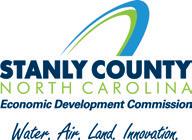
Stanly County Economic Development Commission
Candice Boyd Lowder, Director 1000 North First Street, Suite 11 Albemarle, NC 28001 704-986-3682
704-986-3685 (f)
clowder@stanlyedc.com www.stanlyedc.com


Bismarck Mandan Chamber EDC
Nathan Schneider, CEcD-Vice President 1640 Burnt Boat Dr. Bismark, ND 58503 701-223-5660
nschneider@bmcedc.com www.bismarckmandanedc.com


Bartlesville Development Authority
Jared Patton, Vice President 201 SW Keeler Bartlesville, OK 74003 918-337-8086
918-337-0216 (f) jpatton@bdaok.org www.bdaok.org

Ponca City Development Authority
David Myers, Executive Director 102 S. Fifth Street Suite 3
Ponca City, OK 74601 580-765-7070
580-765-7070 (f)
dmyers@goponca.com
www.goponca.com

City of Warwick Department of Tourism, Culture, and Development
3275 Post Road
Warwick, RI 2886 401-738-2014
econ.dir@warwickri.com
www.visitwarwickri.com

Quonset Development Corporation
Steven J. King, Managing Director 95 Cripe Street North Kingstown, RI 2852 401-295-0044
sking@quonset.com
www.quonset.com

Charleston Regional Development Alliance
Megan Fink
4401 Belle Oaks Drive, Suite 420 North Charleston, SC 29405 843-760-3351
mfink@crda.org
www.crda.org
Lexington County Economic Development
Sarah J. Johnson
Department Director
212 South Lake Drive
Lexington, SC 29072
803-785-6818
sjjohnson@lex-co.com
www.LexingtonCountyUSA.com

City of Lebanon
Sarah Haston
Economic Development Director
200 North Castle Heights Ave. Lebanon, TN 37087
615-443-2839 EXT. 2120
Sarah.Haston@lebanontn.org
www.lebanontn.org

NETWORKS – Sullivan Partnership
South Carolina I-77 Alliance
Christopher Finn
3200 Commerce Drive, Suite D Richburg, SC 29729
803-789-3467
chris.finn@i77alliance.com
www.i77alliance.com

SouthernCarolina Regional Alliance
Kay Maxwell
1750 Jackson Street, Suite 100 Barnwell, SC 29812
803-541-0023
kmaxwell@southerncarolina.org
www.southerncarolina.org


Blount Partnership
Bryan Daniels CEcD, CCE, IOM
President and CEO
201 S. Washington Street
St. Maryville, TN 37804
865-983-2247
865-984-1386
bdaniels@blountpartnership.com
www.blountchamber.com

Bristol Tennessee Essential Services
April Eads
Business Development Manager
2470 Volunteer Parkway
Bristol, TN 37620
423-793-5532
423-793-5545 (f)
aeads@btes.net
www.btes.net/index.php/economic-development
Clay Walker PO Box 747, Blountville, TN 37617 423-279-7681
cwalker@networkstn.com
www.networkstn.com


Big Spring Economic Development Corporation
Mark Willis
215 W. 3rd Street
Big Spring, TX 79720
432-264-6032
markwillis@bigspringtx.com
www.bigspringtx.com

Bowie Economic Development Corporation
Janis Crawley
101 E. Pecan, Bowie, TX 76230
940-872-4193
940-531-8201(c)
BEDC@BowieTexasEDC.com
www.BowieTexasEDC.com
Cedar Hill Economic Development Corporation
Henry Florsheim
285 Uptown Boulevard, Bldg. 100 Cedar Hill, TX 75104
972-291-5132
henry.florsheim@cedarhilltx.com www.cedarhilledc.com

City Development Corp of El Campo
Carolyn Gibson Executive Director 707 Fahrenthold P.O. Box 706
El Campo, TX 77437 979-543-6727
979-320-7727 cell cgibson@elcampoeco.org www.elcampoeco.org

City of Fort Worth
Robert Sturns, Director 1150 S. Freeway Fort Worth, TX 76104 817-392-2663
Robert.Sturns@fortworthtexas.gov

City of Leander
Randall Malik
Economic Development Director 201 N Brushy Leander, TX 78641 512-528-2855
rmalik@leandertx.gov www.leanderbusiness.com

DeSoto Economic Development
Matt Carlson, CEO
211 E. Pleasant Run Road
DeSoto, TX 75115
Ph: 972-230-9611
mcarlson@desototexas.gov
www.dedc.org

LCRA
Karen Dickson Economic Development Manager
3700 Lake Austin Blvd. Austin, TX 78703
512-578-3291
karen.dickson@lcra.org
www.lcra.org/economic-development/ pages/default.aspx

McKinney Economic Development Corporation
Peter Tokar III President/CEO
7300 SH 121 SB, Ste 200 McKinney, TX 75070 972-547-7687
ptokar@mckinneyedc.com
www.uniquemckinney.com

Mineola Economic Development Corp
Mercy Rushing, Executive Director 300 Greenville Highway Mineola, TX 75773 903-569-6183
903-245-8505
mrushing@mineola.com
www.mineola.com
Cameron Industrial Foundation
Ginger Watkins, Executive Director
102 E. First Street, Suite A Cameron, TX 76520
254-697-4970
254-482-1119 (c)
gwatkins@cameronindustrialfoundation.com
www.cameronindustrialfoundation. com
Conroe Economic Development Council
Danielle Scheiner, Executive Director 300 W Davis St, Ste 510 Conroe, TX 77301 USA 936-522-3529
scheiner@conroeedc.org www.conroeedc.org
Odessa Economic Development Corporation
Tom Manskey
700 N. Grant Ave. Odessa, TX 79761
432-333-7880
tom@odessaecodev.com
www.odessatx.com
Jacksboro Economic Development Corporation
Brenda Tarpley
Executive Director
302 S. Main Street Jacksboro, TX 76458
940-567-3151
btarpley@jacksboroedc.com
www.jacksboroedc.com

Laredo Economic Development
Gene Lindgren
President & CEO
302 S. Main Street Laredo, TX 78044 956-722-0563
glindgren@laredoedc.org
www.laredoedc.org
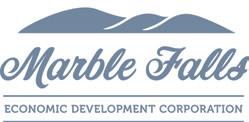
Marble Falls EDC
Christian Fletcher
801 Fourth Street
Marble Falls, TX 78654 830-798-7079
cfletcher@marblefallseconomy.com
www.marblefallseconomy.com

Mount Pleasant EDC
Nathan Tafoya, Executive Director 1604 N. Jefferson Ave.
Mount Pleasant, TX 75455 903-572-6602
nathan@mpedc.org
www.mpedc.org

New Braunfels EDC
Michele Boggs
Marketing/Research Director
390 S. Seguin Avenue
New Braunfels, TX 78130 830-608-2811
michele@innewbraunfels.com
www.newbraunfelsedc.com

Pflugerville Community Development
Amy Madison
3801 Helios Way Suite 130
Pflugerville, TX 78660 512-990-3725
amym@pfdevelopment.com
www.pfdevelopment.com

Plainview Economic Development Corporation
Kristi Aday, Executive Director
1906 West 5th
Plainview, TX 79072
806-293-8536
kaday@plainviewtx.org
www.plainviewedc.org
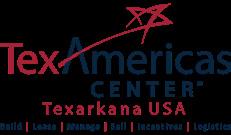
TexAmericas Center
Eric Voyles, Executive Vice President
Chief Economic Development Officer
107 Chapel Lane
New Boston, TX USA 75570
Po3-223-9841 (0)
903-306-8923 Cell
Eric.Voyles@TexAmericasCenter.com
www.TexAmericasCenter.com

Whitesboro Economic Development Corp.
Lynda Anderson, Director
P.O. Box 340 or 111 W. Main Whitesboro, TX 76273 930-564-3311
landerson@whitesborotexas.com
www.whitesborotexas.com
UTAH

Eagle Mountain Economic Development
Evan Berrett, City Administrator
1650 E. Stagecoach Run Eagle Mountain, UT 84005 801-789-6621
eberrett@emcity.org
www.eaglemountaincity.com

Arlington Economic Development
Ryan Touhill, AED Director


Bedford County Office of Economic Development
Pam Bailey, Director of Economic Development Bedford County 122 East Main Street, Suite 202 Bedford, Virginia 24523 540-587-5670
pbailey@bedfordcountyva.gov
www.bedfordeconomicdevelopment.com
WASHINGTON


City of Lakewood Economic Development
Becky Newton, Manager 6000 Main Street SW Lakewood, WA 98499 877-421-9126
bnewton@cityoflakewood.us
www.buildyourbetterhere.com

City of Maple Valley
Kristina Weaver Economic Development Manager
P.O. Box 320 Maple Valley, WA 98038 425-413-8800
kristina.weaver@maplevalleywa.gov www.maplevalleywa.gov

Try-City Development Council
Karl Dye, President & CEO 7130 W. Grandridge Blvd #A Kennewich, WA 99336 509-735-1000
kdye@tridec.org
www.tridec.org


Madison Region Economic Partnership
Kathy Collins, VP Economic Development
8517 Excelsior Drive, Suite 107 Madison, WI 53717
608-571-0407
kcollins@madisonregion.org
www.madisonregion.org

New North, Inc
Barb LaMue, President & CEO 2740 W. Mason Street Green Bay, WI 54303 920-676-1960
barb.lamue@thenewnorth.com
www.thenewnorth.com

Portage County Business Council, Inc. PCB
Michael Witte, Executive Director 5501 Vern Holmes Drive Stevens Point, WI 54482 715-344-1940
715-344-1940 (f)
michaelw@portagecountybiz.com www.portagecountybiz.com
WYOMING

Advance Casper
Morryah McCurdy
111 S. Durbin, Suite 200 Casper, WY 82601 307-577-7011

morryah@advancecasper.com
www.advancecasper.com
1100 N Glebe Rd Suite 1500 Arlington, VA 22201
703-228-0808
703-228-0805 (f)
rtouhill@arlingtonva.us
www.arlingtoneconomicdevelopment.com
City of Franklin Economic Development
John Regetz, Director 9229 W. Loomis Road Franklin, WI 53132 414-427-7566
jregetz@franklinwi.gov www.franklinwi.gov
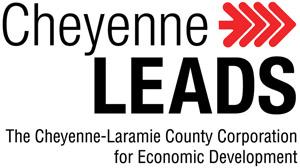
Cheyenne LEADS
Betsey Hale, Chief Executive Officer
One Depot Square
121 W. 15th St. Suite 304
Cheyenne, WY 82001 307-638-6000
betseyh@cheyenneleads.org
cheyenneleads.org

The Laramie Chamber Business Alliance
Josh Boudreau, VP Economic Development
528 South Adams Street
Laramie, WY 82070
307-745-7339
jboudreau@laramie.org
www.laramie.org
ALBERTA


Calgary Economic Development
500 Centre Street S, 32nd Floor
Calgary, Alberta, Canada T2G 1A6
403-221-7831
info@calgaryeconomicdevelopment.com
www.calgaryeconomicdevelopment.com
Town of Vegreville
Jamieson Brown
4829-50 Street
P.O. Box 640
Vegreville, Alberta T9C 1R7
587-790-0919
jbrown@vegreville.com
www.choosevegreville.com
MANITOBA
City of Brandon
Gerald Cathcart
Director
Main Floor, 410 9th Street



City of Guelph
Christine Chapman
1 Carden Street
Brandon, Manitoba, Canada R7A 6A2
204-729-2131
g.cathcart@brandon.ca
www.economicdevelomentbrandon.com

Ignite Fredericton
Paula Lehr
40 Crowther Lane, Ste. 100 Fredericton, NB E3C 0J1
506-282-0624
paula.lehr@ignitefredericton.com
www.ignitefredericton.com
Imagine Chaleur
Shirley de Silva
702 Principale Street, Ste. 2
Petit-Rocher, NB E8j 1V1
506-542-2688
shirley.desilva@csrchaleurrsc.ca
www.csrchaleurrsc.ca
Expansion Dieppe
Louis Godbout
333 Acadia Avenue
Dieppe, NB E1A 1G9
506-877-7850
louis.godbout@dieppe.ca
www.expansiondieppe.ca
Guelph, Ontario, Canada N1H 3A1
519--822-1260 ext. 2823
Christine.chapman@guelph.ca www.guelph.ca/business
City of Kawartha Lakes Economic Development
Lindsey Schoenmakers
180 Kent Street West
Lindsay, Ontario, Canada K9V 2Y6
705-324-9411
lschoenmakers@kawarthalakes.ca www.kawarthalakes.ca

Middlesex County
Cara A. Finn, BBA, M. Ad.Ed. Director of Economic Development
399 Ridout St. North London, ON N6A 2P1 519-434-7321
cfinn@middlesex.ca
www.investinmiddlesex.ca

City of Mississauga Economic Development
Chistina Kakaflikas, Ec. D. Director of Economic Development Office
Mississauga City Hall
300 City Centre Drive, 3rd Floor
Mississauga, ON L5B 3C1 Canada
800-456-2181
905-896-5931
christina.kakaflikas@mississauga.ca
www.TheFuturelsUnlimited.ca
Town of Aurora Economic Development
Lisa Hausz
100 John West Way, Box 1000
Aurora, Ontario, Canada L4G 6J1
905-727-1375
lhausz@aurora.ca
www.aurora.ca

Vaughan Economic and Cultural Development
Raphael Costa
Vaughan City Hall, Level 200 2141 Major Mackenzie Drive
Vaughan, Ontario, Canada L6A 1T1 905-832-8526 ext. 8891
raphael.costa@vaughan.ca
www.vaughan.ca/Business
